Personally, I’d mix up the week with a blend of big-city energy, relaxing beach vibes, and rich cultural experiences. Keep in mind that the climate varies significantly between the north and the south, so plan according to your weather preferences. I’ll also cover some must-try Vietnamese food and drinks, so you know what to look out for.
When to Visit
Vietnam has distinct climate zones, so the best time to visit varies. North Vietnam is best from March–May and September–November, while South Vietnam is ideal from December–April for dry, sunny weather. I traveled from North to South in December—slightly rainy but comfortable. Off-peak travel is cheaper, making it a great option for budget travelers.
North Vietnam
1 week south Vietnam itinerary
Alright, enough about the weather —let’s dive into the itinerary and what you can expect from each destination.
I recommend starting your journey in Ho Chi Minh City, but rather than spending time there right away, head straight to the beach and save Ho Chi Minh City and its surroundings for your final stop before leaving Vietnam. In that way you can maximize your 1 week with both beach and culture.
Days 1–3: Phu Quoc, Côn Đảo, Nha Trang or Da Nang & Hoi An – Beach & Relaxation
If you love beaches and a laid-back atmosphere, you have 4 great options:
- Côn Đảo – a lesser-explored paradise, perfect for those who enjoy off-the-beaten-path adventures.
- Phu Quoc – a popular holiday island with plenty of tourist-friendly spots.
- Nha Trang – a popular holiday destination mostly by russians and korenas.
- Dang Nang & Hoi An –Beaches and cultural exploration. Da Nang offers vibrant city life and beaches, while Hoi An is known for its ancient town, lantern-lit streets, and delicious street food. (I would choose this option since you can visit 2 great places because they are only 20 km apart and well connected.)
Option 1: Phu Quoc
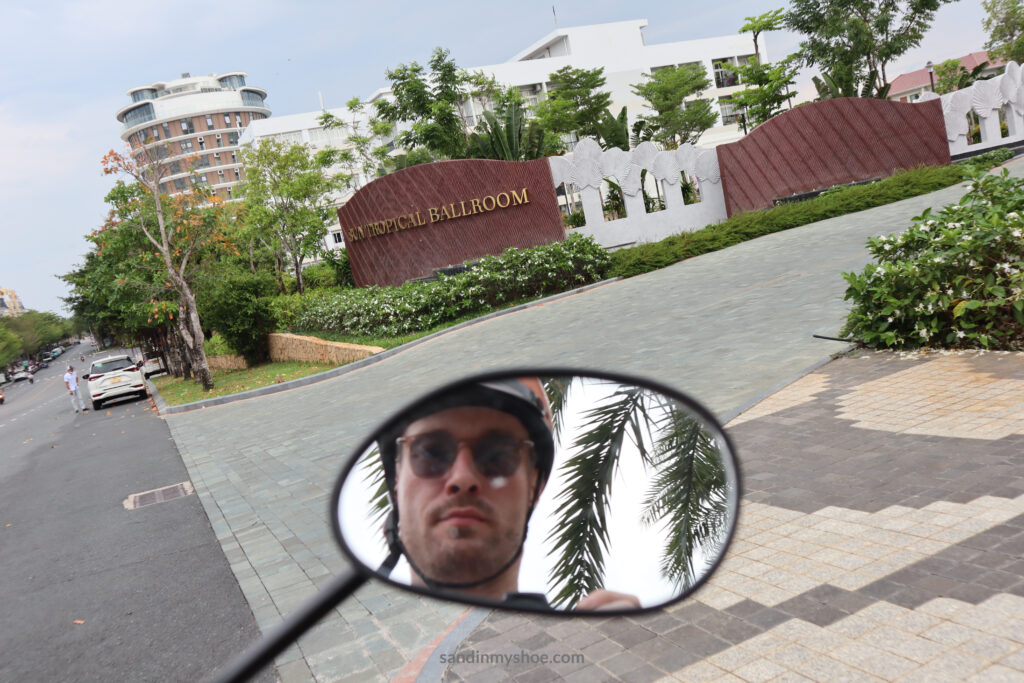
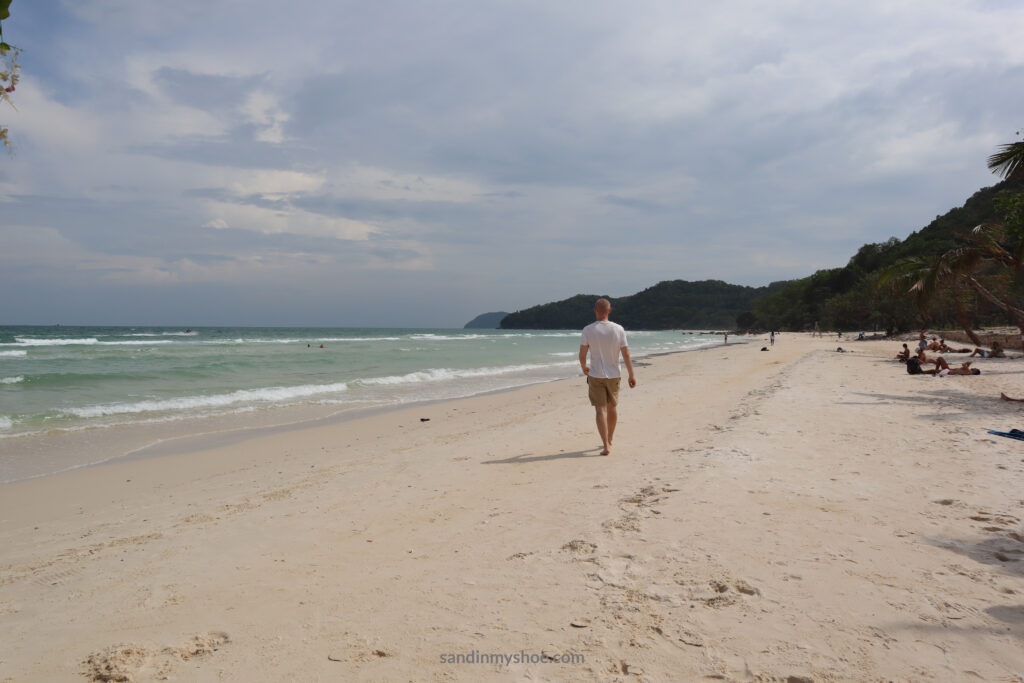
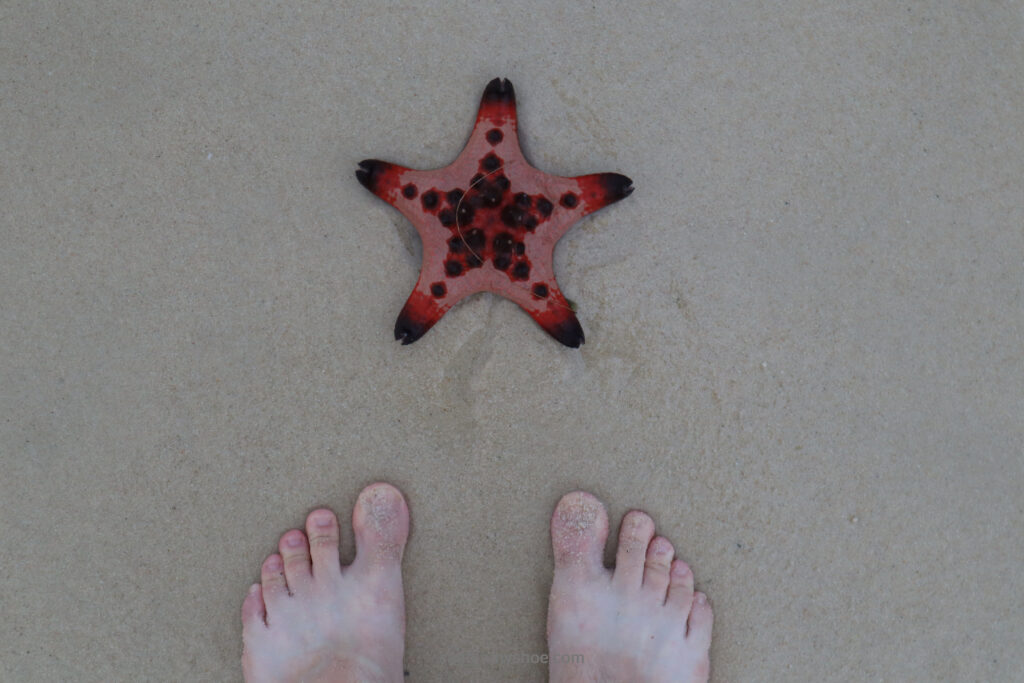
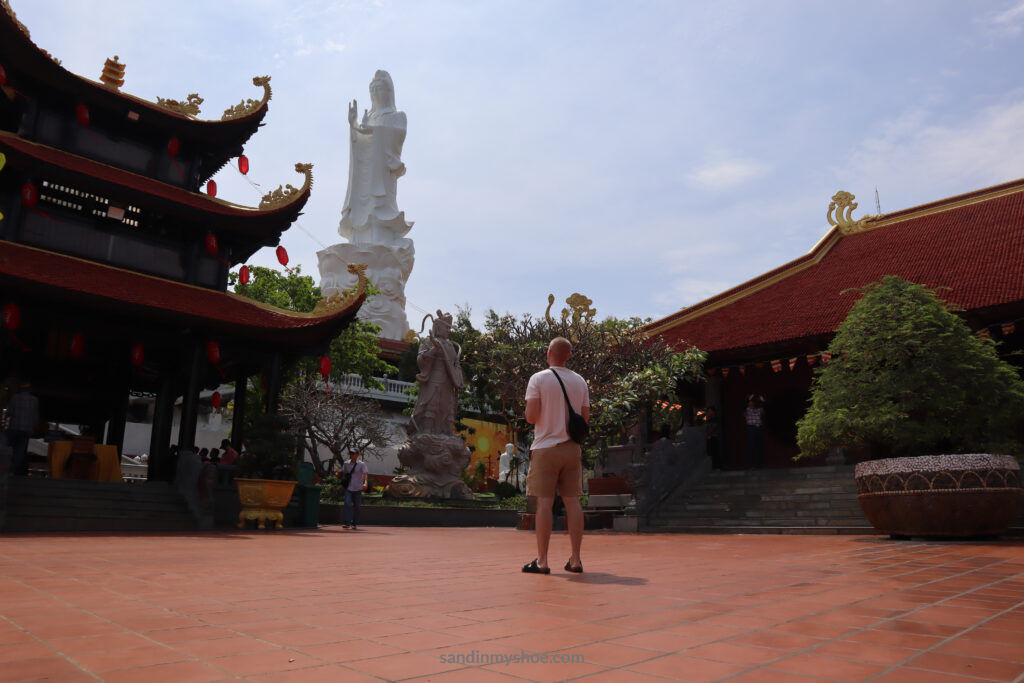
Once you’ve checked into your accommodation, rent a motorbike and explore the island at your own pace. If you prefer, there’s also a free shuttle bus service available, though it doesn’t cover the entire island. Expect Phu Quoc to be quite touristy, but it offers stunning beaches and interesting sites to visit.
While exploring Phu Quoc on a motorbike, I actually ran out of gas in the middle of nowhere. Luckily, some friendly locals helped me find the nearest gas station, turning what could have been a frustrating situation into a great travel memory. It’s a good reminder to keep an eye on your fuel level—gas stations aren’t always around the corner!
Must-visit spots in Phu Quoc
- Ong Lang Beach & Sao Beach – Two of the island’s most beautiful beaches.
- Starfish Beach – Just as the name suggests, the waves bring hundreds of starfish to the shore. Beware of scams! Locals may try to sell you a boat trip to the beach, but you can easily drive your motorbike close and walk the last 15 minutes to the location of the starfish.
- Suối Tranh Waterfall & Hiking – A scenic and easily accessible waterfall. However, if there hasn’t been rain for a while, the waterfall may dry up. The surrounding area is still worth a visit, with lush nature and a peaceful atmosphere. Beyond the falls, there’s a 5 km hiking trail through medium-difficulty terrain—just follow the path to continue the adventure.
- Buddhist Pagoda (Thiền viện Trúc Lâm Chùa Hộ quốc – Phú Quốc) – Worth a visit, and conveniently located on the way to Sao Beach.
Option 2: Côn Đảo
If you’re looking for a more remote and untouched island experience, Côn Đảo is the perfect choice. The island is accessible by a 1-hour 15-minute flight from Ho Chi Minh City. Once there, the best way to explore is, of course, by motorbike. Expect pristine beaches, historical sites, and less tourists.
Option 3: Nha Trang (Little Moscow / Little Seoul)
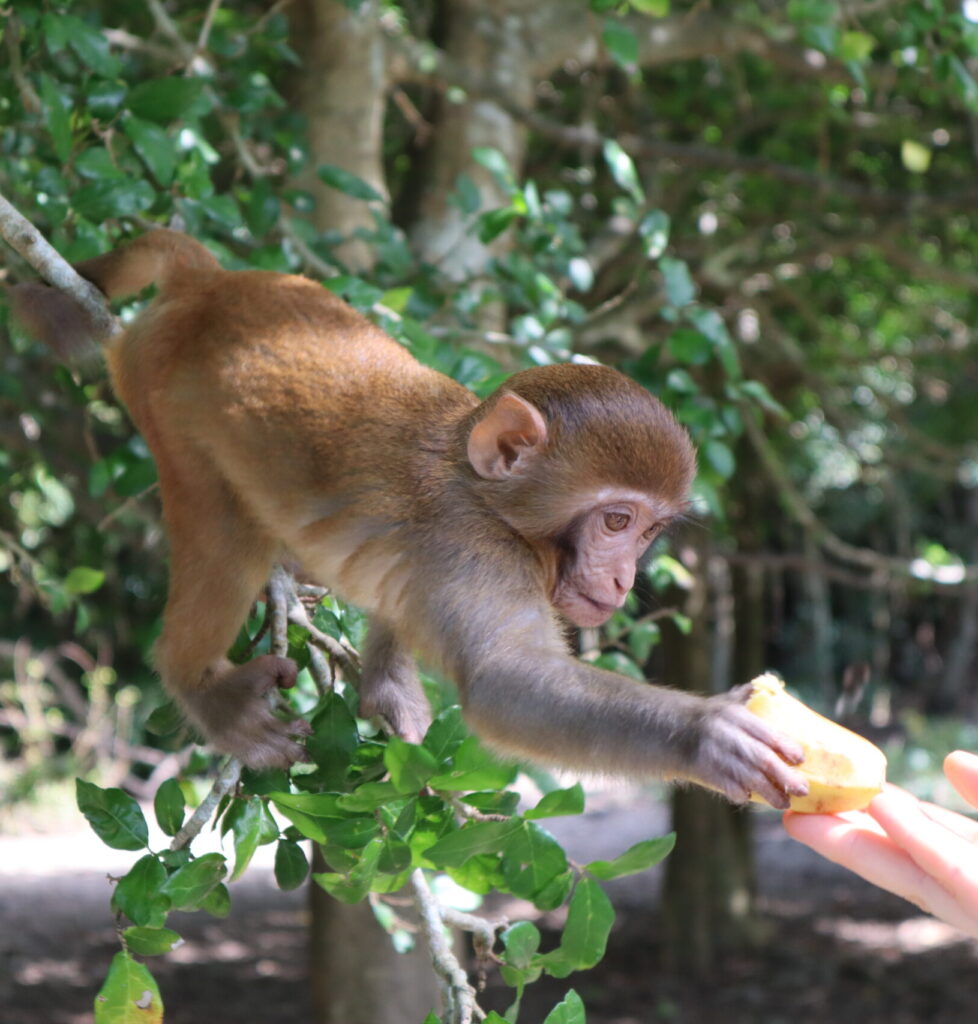
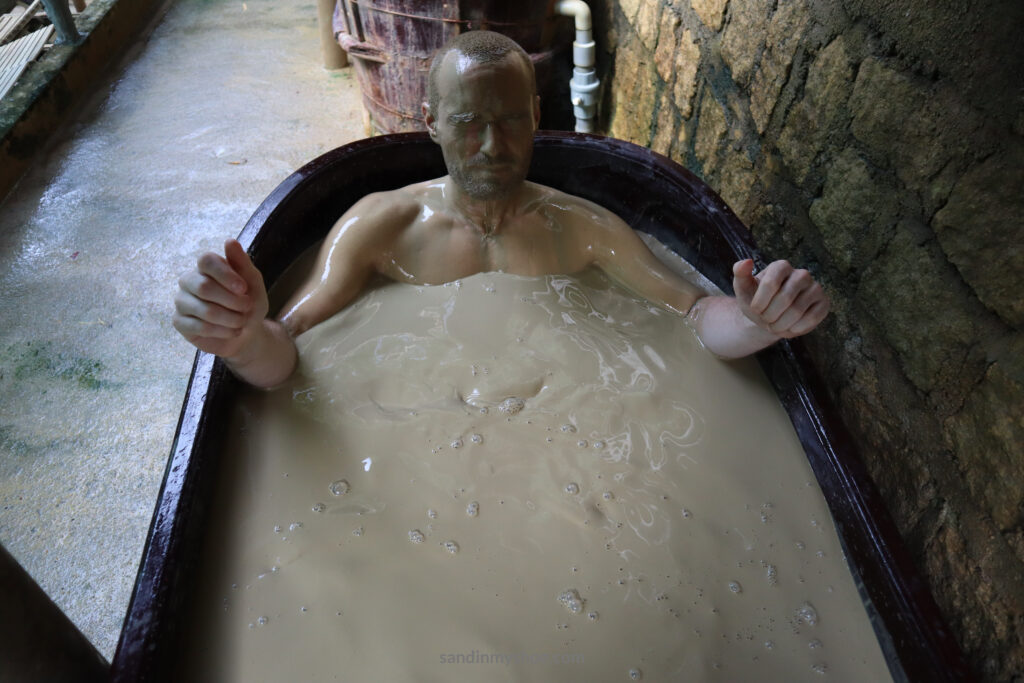
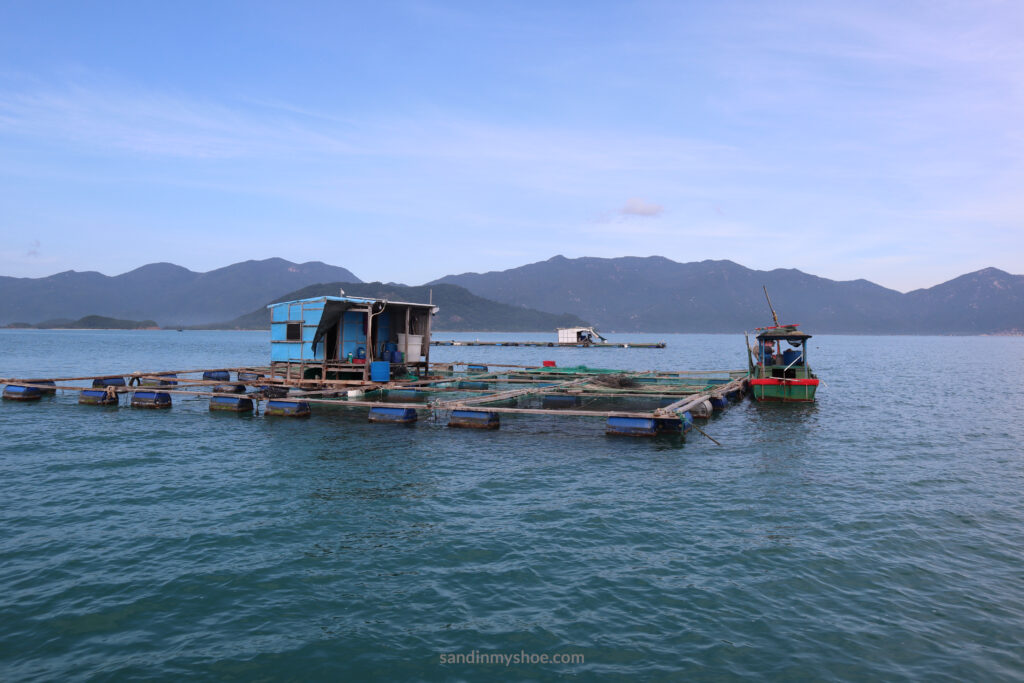
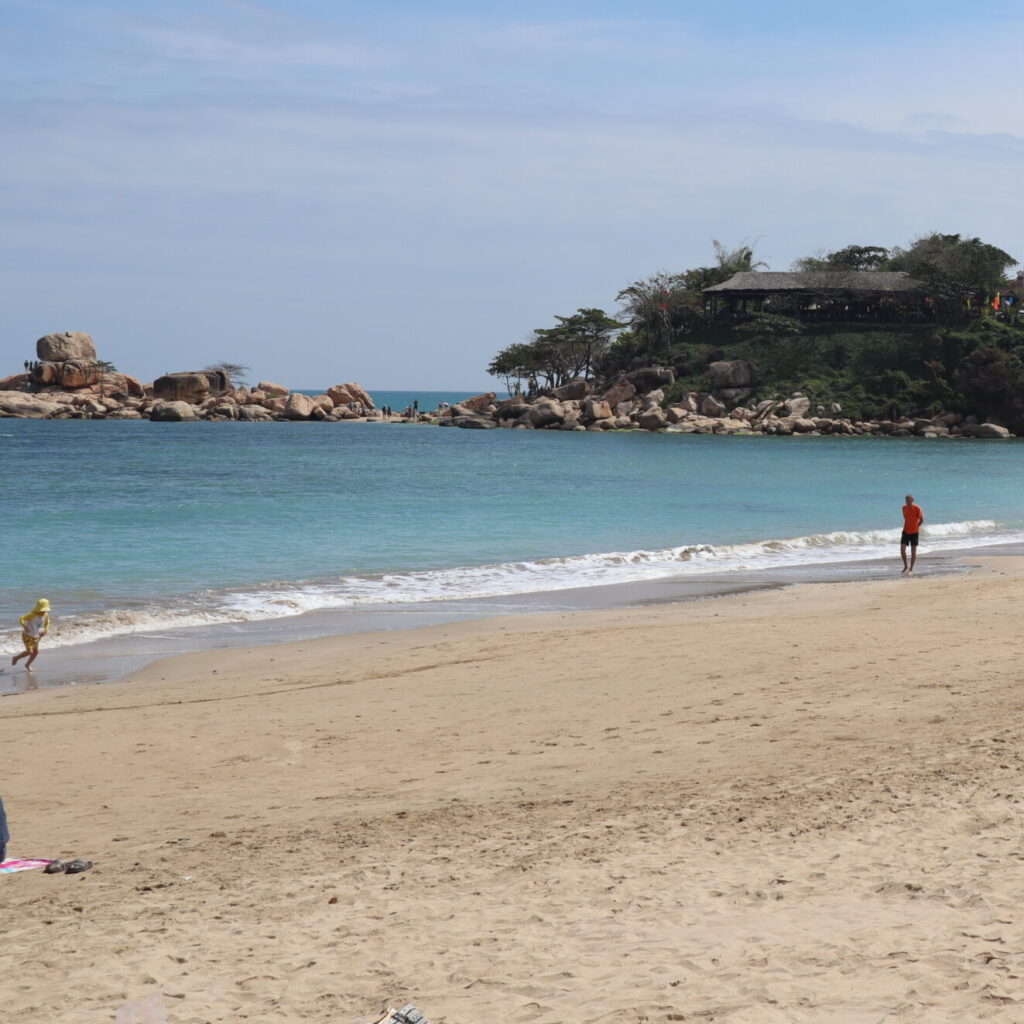
Nha Trang has predominantly been visited by Russians, and in recent years, Koreans have also become a significant part of the tourist crowd. Many businesses in the central areas even have signs in Russian and Korean, which can take away a bit of the city’s charm. However, despite the influence of these tourist groups, Nha Trang still has plenty to offer, including beautiful beaches, a fantastic mud bath, and interesting markets.
You can fly to Nha Trang from Ho Chi Minh City in about 1 hour, or if you prefer, you can take the bus, which takes around 9 hours.
Must-visit spots in Nha Trang
- Thap Ba Mud Bath – One of the relaxing things you can do in Nha Trang is to soaking in a mineral-rich mud bath. After the bath you can get a massage or just relax in the pools.
- Monkey Island – Monkey island (Hon Lao), is a small island about 15 km north of Nha Trang. It is home to hundreds of monkeys that roam freely and interact with visitors.
- Night Market – The night market offers the usual tourist souvenirs and trinkets. It’s worth a visit, but don’t expect anything extraordinary.
- Dam Market – A lively local market where you’ll find everything from fabric by the meter and household items to fresh fruits and fried seafood. Definitely worth a visit for an authentic local experience. Around the market, you’ll find plenty of affordable restaurants serving local dishes.
Do you want to know more about Nha Trang and its must-visit spots? Check out my post about Nha Trang!
Option 4: Da Nang & Hoi An

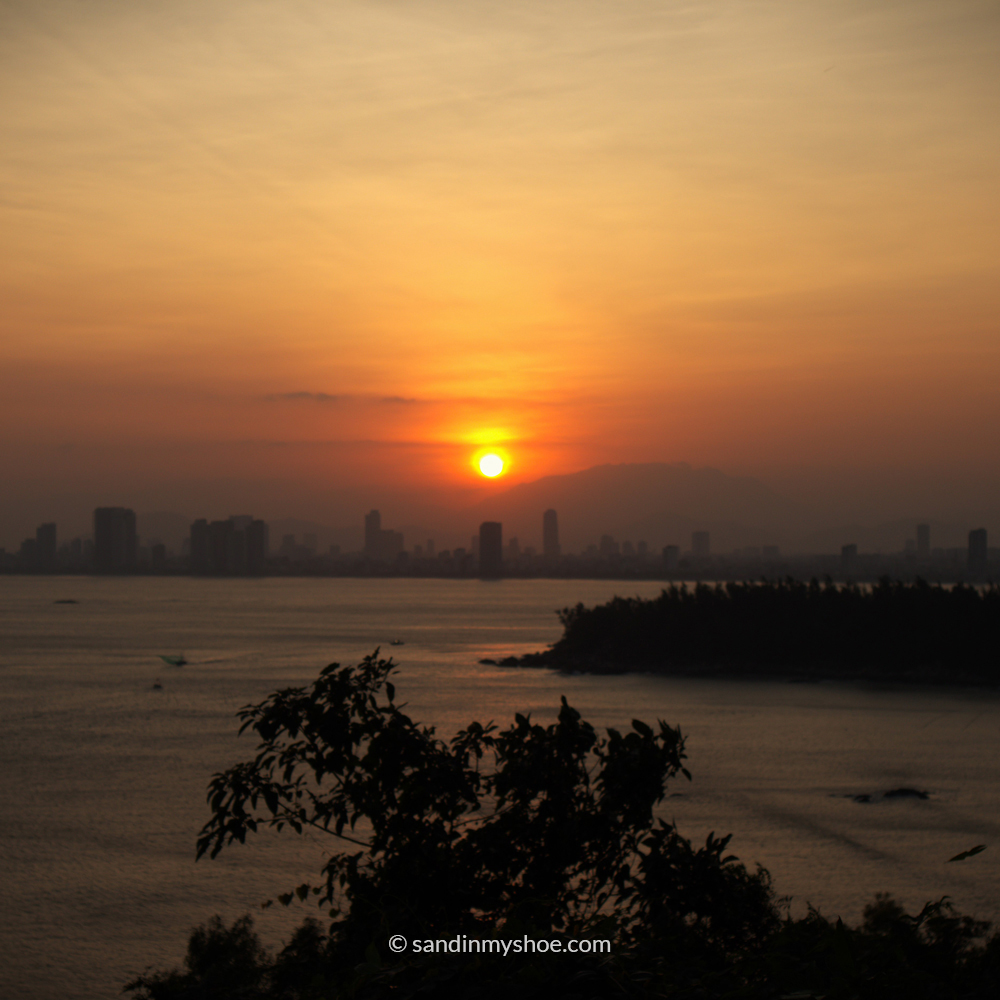

Da Nang is also quite well-visited by Russians and Koreans, to the extent that they even get service in their own languages. You can easily fly here from Ho Chi Minh City, which is recommended if you’re short on time. The highlights of these two cities are:
Da Nang: Stunning beaches, the Marble Mountains, the Golden Bridge with its giant hands, and a vibrant city scene with cafes, shopping, and dining.
Hoi An: A UNESCO World Heritage Site, Hoi An is known for its beautifully preserved ancient town, lantern-lit streets, charming architecture, and incredible street food. Just hanging around the area is an experience per se.
Popular spots in the area
- My Son sanctuary is a UNESCO World Heritage Site where history lovers can dive into the fascinating story of the Cham civilization and explore its ancient ruins.
- The Marble Mountains are a group of five limestone and marble hills near Da Nang, known for their stunning views, caves, temples, and spiritual significance.
The Golden Bridge (Aka the Hands Bridge)is a unique structure with two giant hands seemingly holding up the bridge. It’s about an hour from Da Nang. While it’s heavily hyped on social media, in my opinion, it’s more of a tourist trap than a must-see spot.
Days 4–5: Ho Chi Minh City (Saigon)
Ho Chi Minh City has many districts, but most tourist attractions are located in District 1. I highly recommend staying there to easily explore the main sights. Other options is district 3, which is very nearby.
Day 4 – History, Culture & Hidden Stories
Independence Palace
This former presidential palace was home to South Vietnam’s leaders before the fall of Saigon. It has several meeting rooms, an underground bunker, and a rooftop helipad. While it has some historical significance, it’s not the most exciting attraction, and you won’t miss much if you skip it.

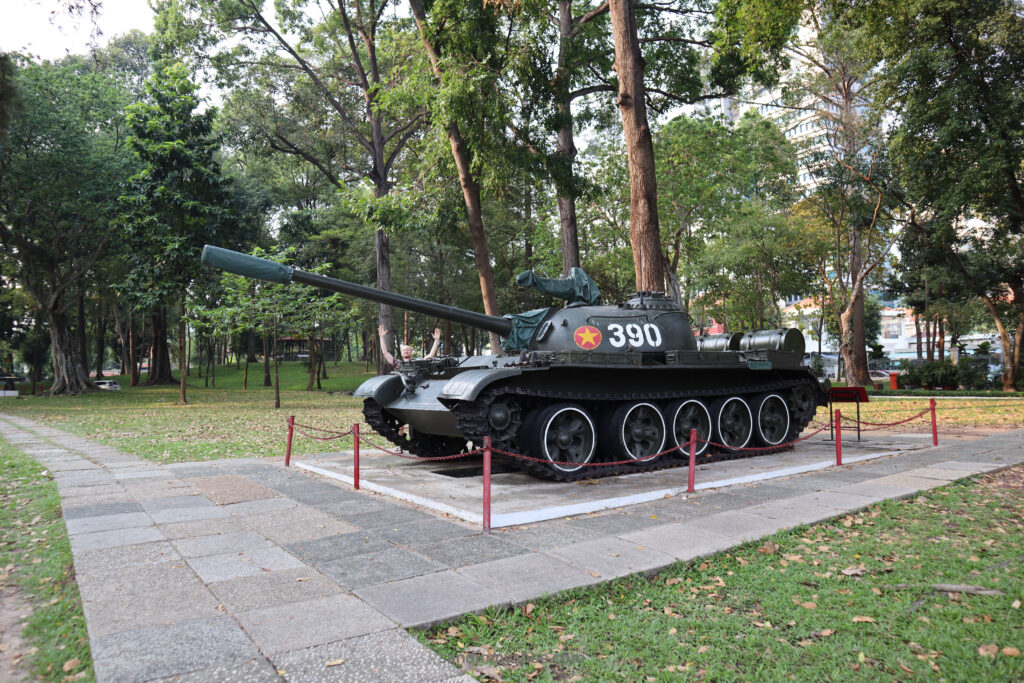
Notre Dame Cathedral & Book Street
After visiting the palace, take a walk to Notre Dame Cathedral and Book Street. Grab a coffee at one of the charming cafés and enjoy the peaceful atmosphere.
Espionage Hideout Café
During the war, both North Vietnamese and American intelligence operated throughout the city. This café served as a secret arsenal, storing weapons for the war effort. Enjoy a coffee or a traditional Vietnamese dish while exploring the hidden passageways.
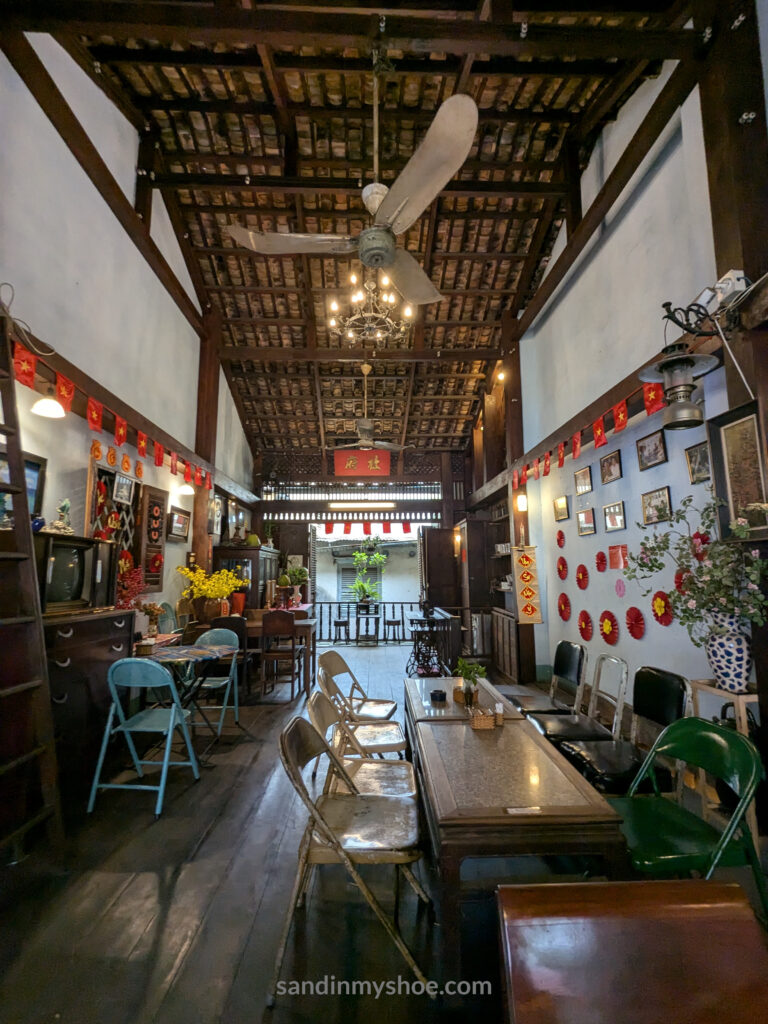
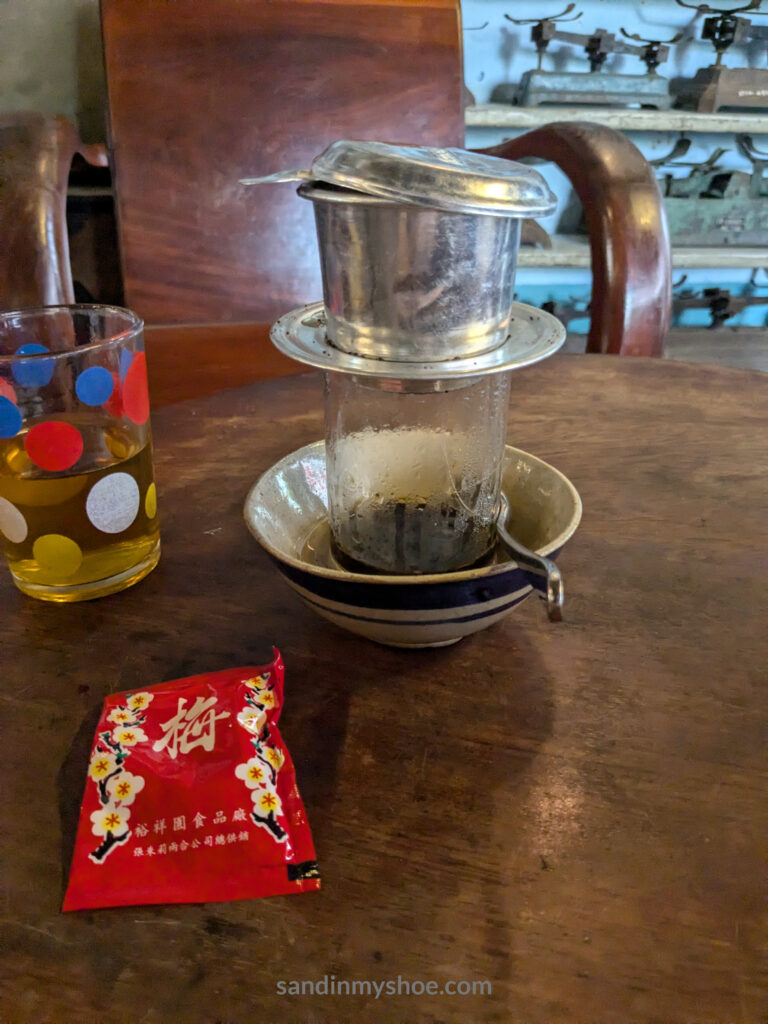
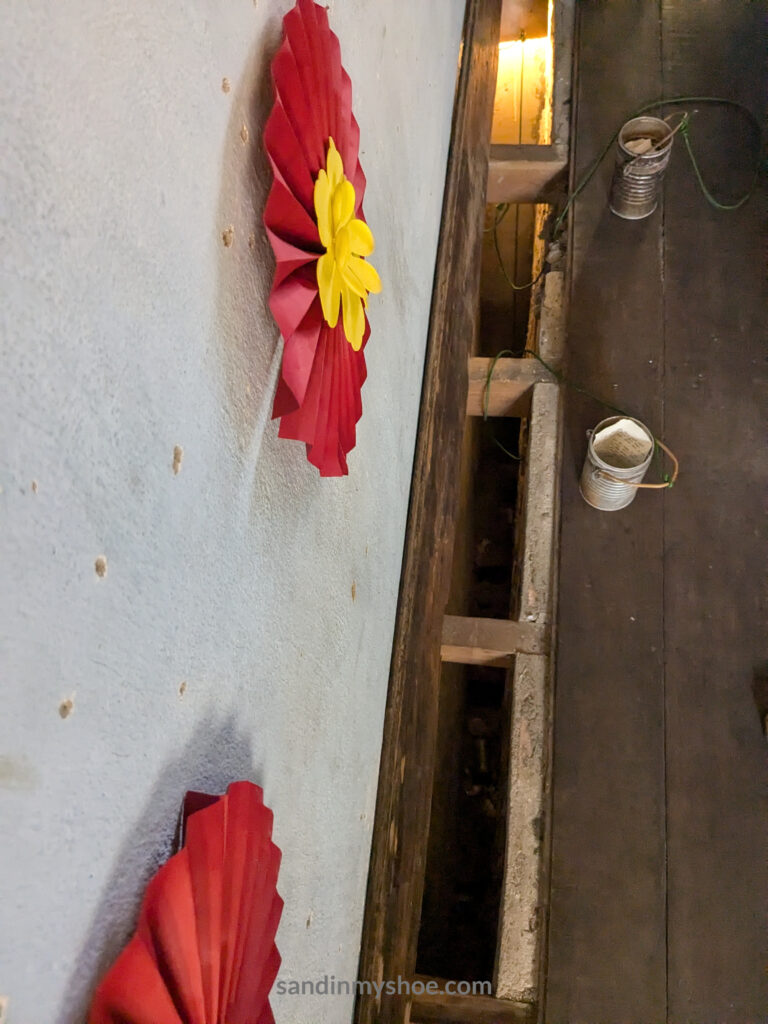
Phở Bình – The Secret War Hub
Nearby, you’ll find Phở Bình, a historic noodle shop that doubled as a communications hub for the Saigon Special Task Force in 1963. This is also where the planning for the 1968 Tết Offensive began.
The cafe apartments
If you’re a coffee fanatic, you should definitely check out the Coffee Apartment in Ho Chi Minh City! This nine-story building is packed with unique cafés, each offering its own vibe, from trendy modern spots to cozy hidden gems. It’s the perfect place to explore different coffee styles while enjoying a great view of the city.
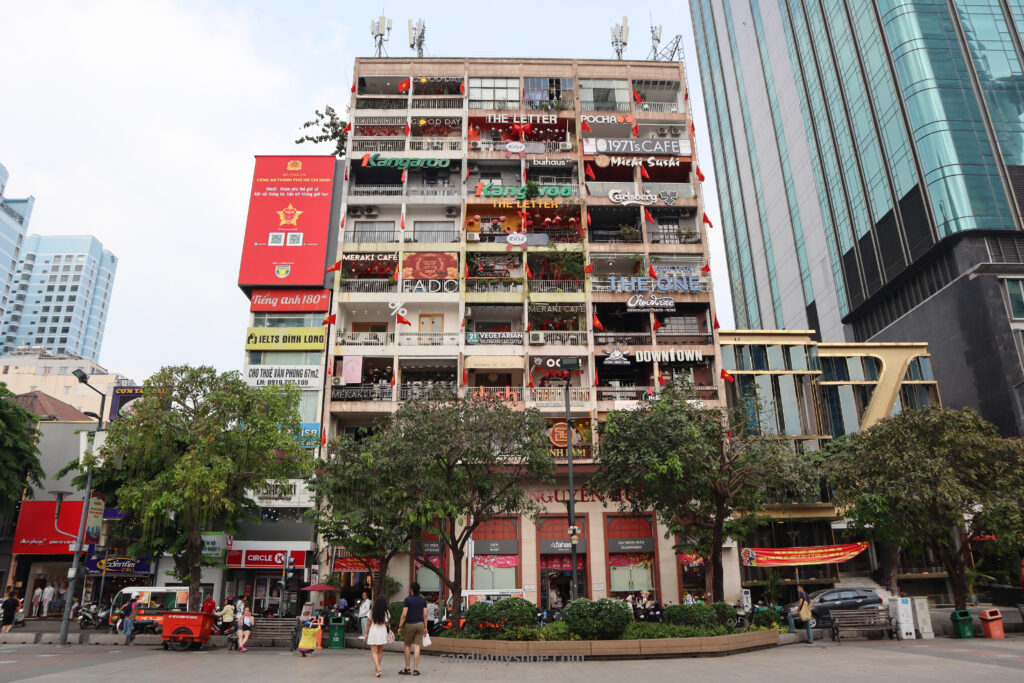
Day 5 – War History & Local Experiences
War Remnants Museum
A must-visit, offering a powerful insight into the Vietnam War and the atrocities committed by the US during the conflict. The museum is well-organized, making it engaging without being overwhelming.
Bến Thành Market
A popular tourist market in District 1 where you can buy souvenirs, local crafts, and knockoff brands at bargain prices (but with lower quality).
Bình Tây Market (Chợ Lớn)
Located in Chinatown (District 5), this market is more authentic and geared toward locals. Even if you don’t buy anything, it’s a great spot to observe daily life and try real Vietnamese food beyond the tourist areas.
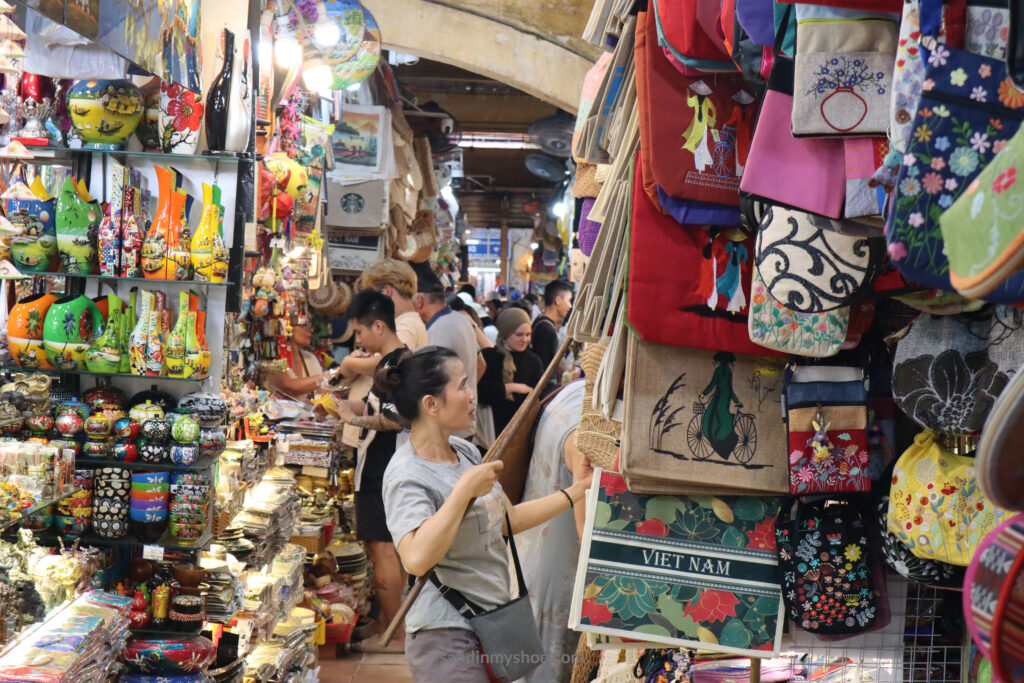
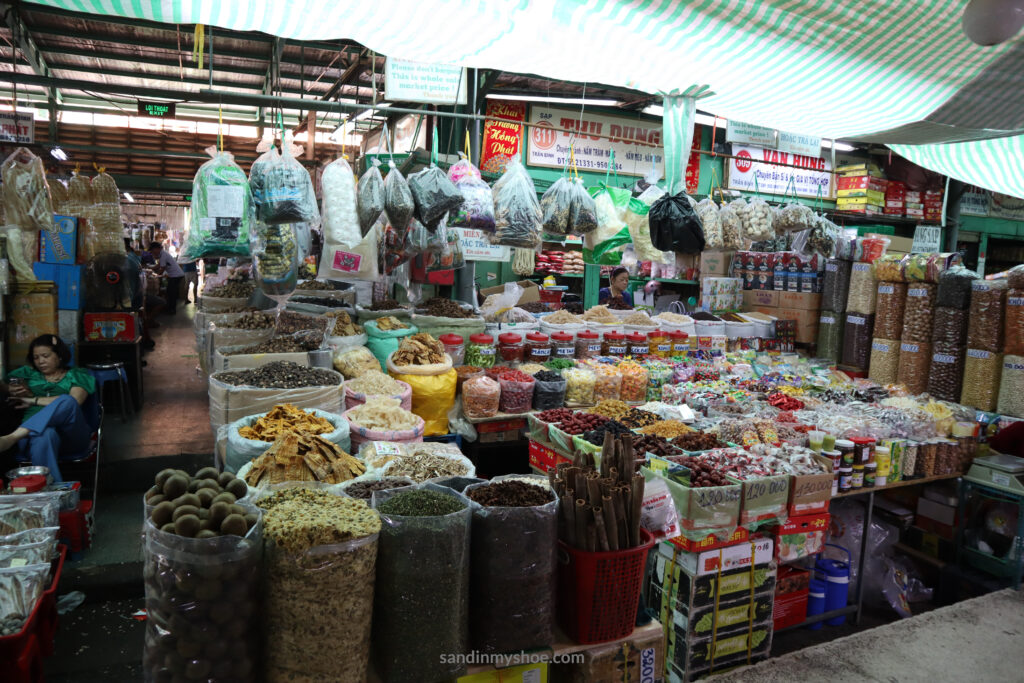
Nightlife & Bars in Ho Chi Minh City
Bùi Viện Street is often recommended for nightlife. While it can be fun for a wild night out, it’s also quite messy, overcrowded, and filled with pushy vendors and overpriced drinks. In my opinion, it’s worth walking through a couple of times, but then it’s better to explore elsewhere.
Below is a list of better places. I didn’t have time to check them all out, so this list is based on recommendations from others as well.
Speakeasies & Cocktail Bars
Lost & Found – A hidden speakeasy with top-tier cocktails and a cozy atmosphere.
Gin House – Small, intimate gin bar with expertly crafted cocktails.
Snuffbox – A stylish speakeasy with a vintage vibe and strong drinks.
Rooftop Bars with a View
Social Club – Chic rooftop with an infinity pool and breathtaking skyline views.
The Lighthouse – Laid-back rooftop with great music and craft cocktails.
Broma Not A Bar – Casual rooftop spot with live music and a solid drink menu.
Late-Night Clubs & Lounges
The Observatory – Underground club with electronic beats and a top-notch sound system.
Craft Beer & Breweries
Pasteur Street Brewing Co. – Famous for its locally brewed craft beers, including the popular jasmine IPA.
East West Brewing Co. – A great selection of house-brewed beers in a spacious taproom.
Brick & Barrel – Cozy pub with an excellent beer selection and whiskey options.
Day 6 – Daytrip to Mekong Delta from Ho Chi Minh City
The Mekong Delta is a lush, peaceful region known for its winding rivers, floating markets, and friendly locals. The easiest way to explore it in one day is by joining an organized tour, which will ensure you make the most of your time.
I personally spent a week there, exploring by motorbike, and it was an incredible experience. However, if you’re short on time, I highly recommend any of the tours below for a hassle-free and immersive glimpse into life on the Mekong.
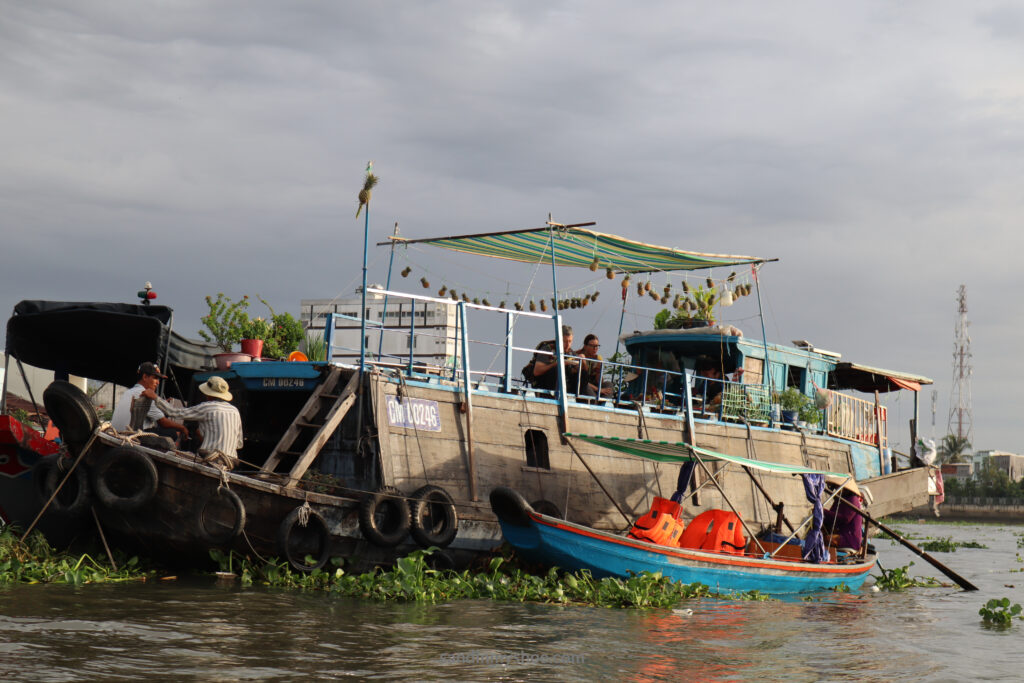
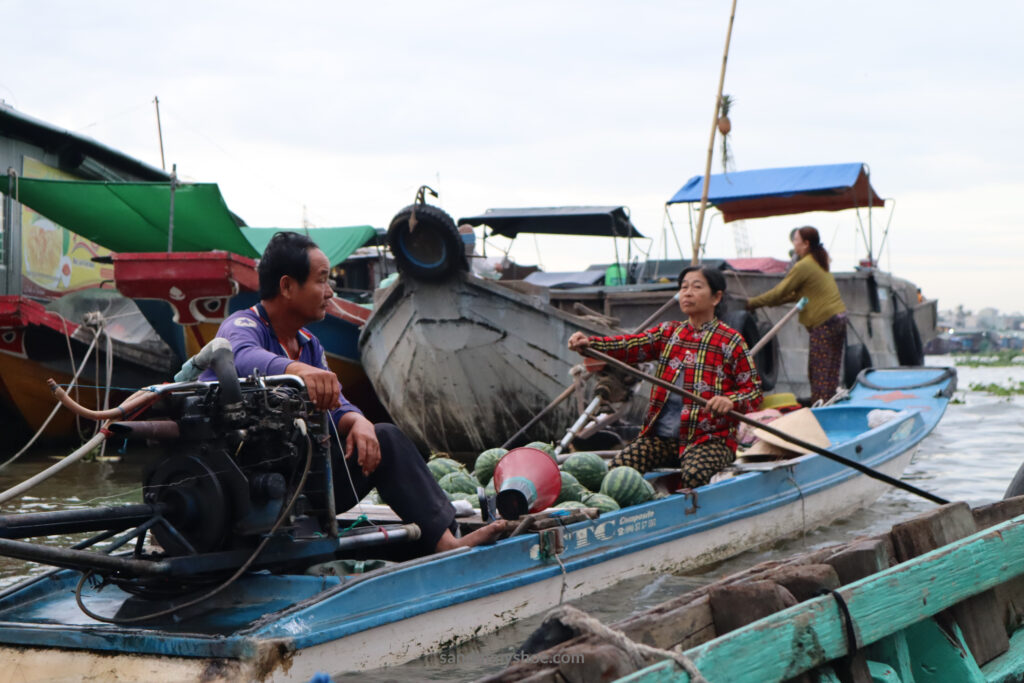
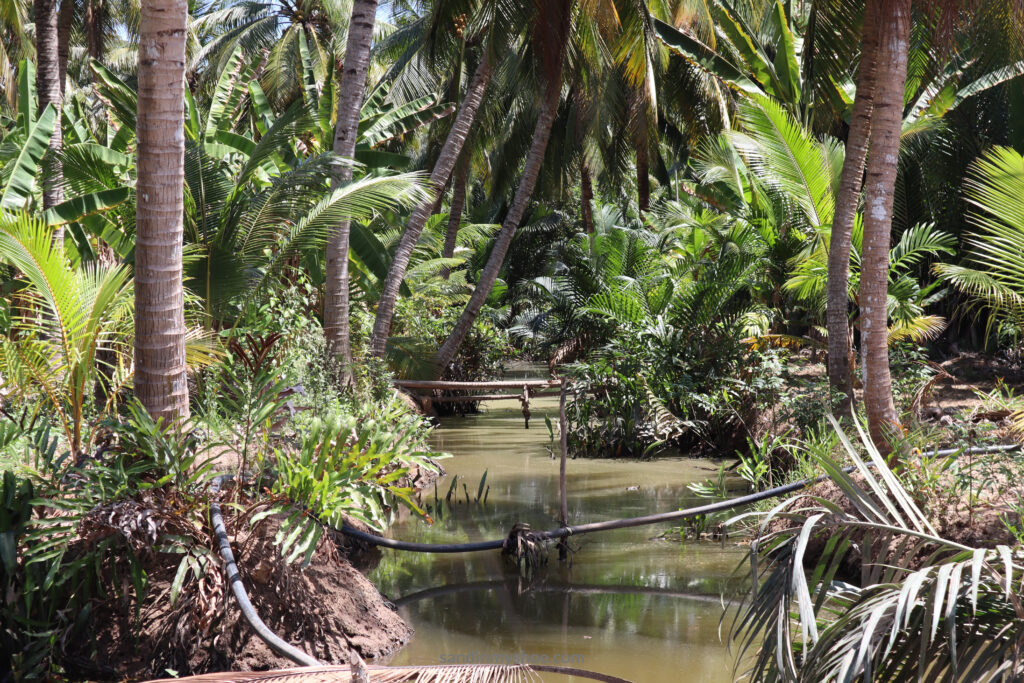
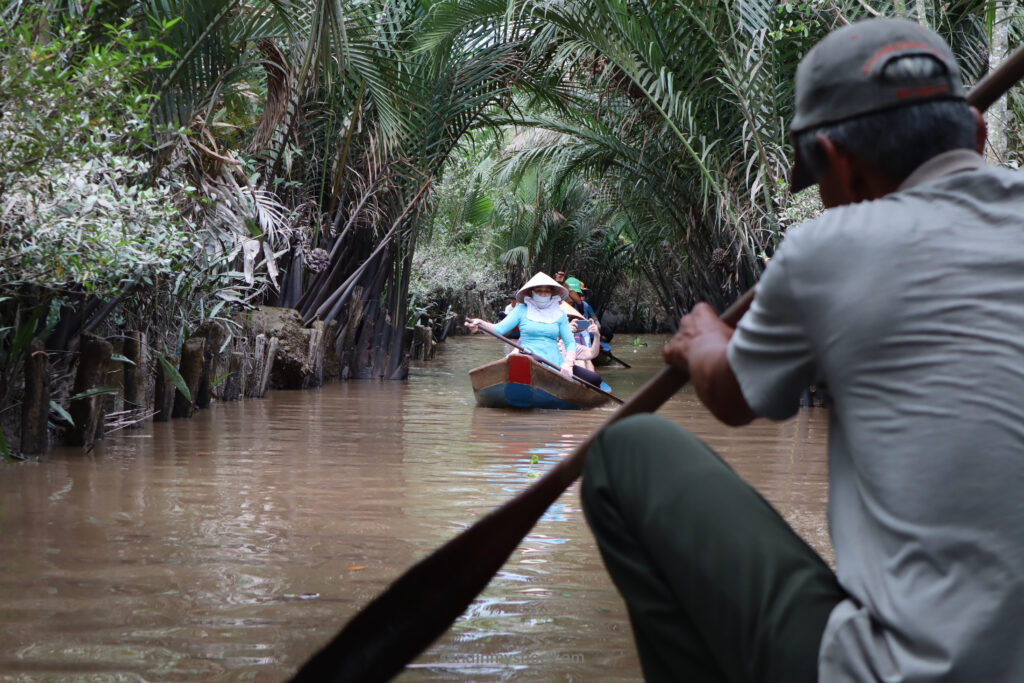
Day 7 –Daytrip to Cu Chi Tunnels from Ho Chi Minh City
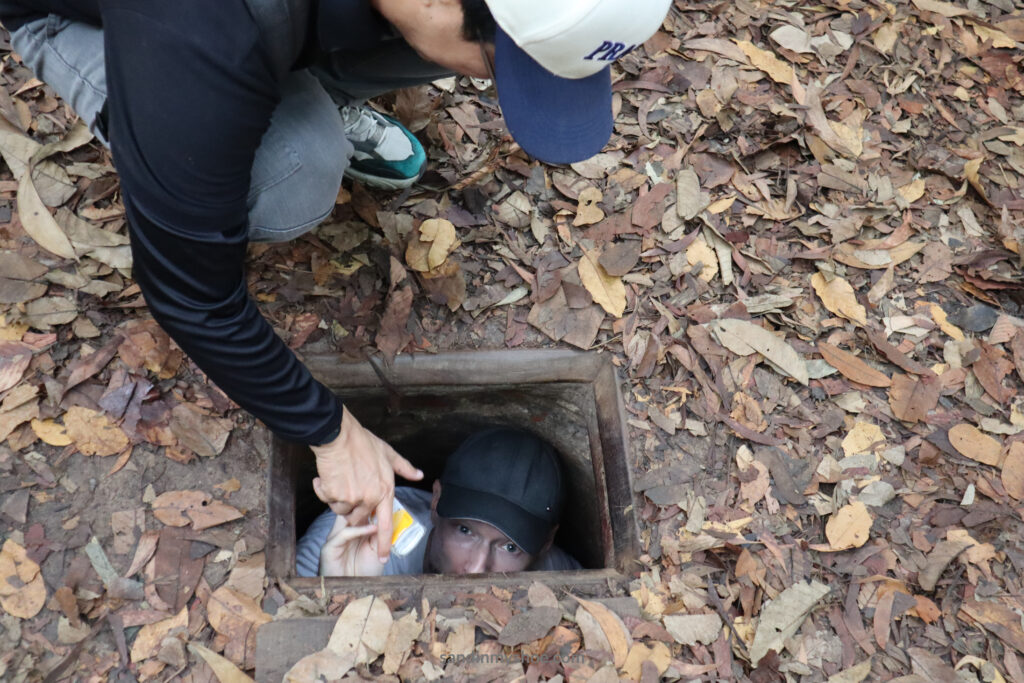
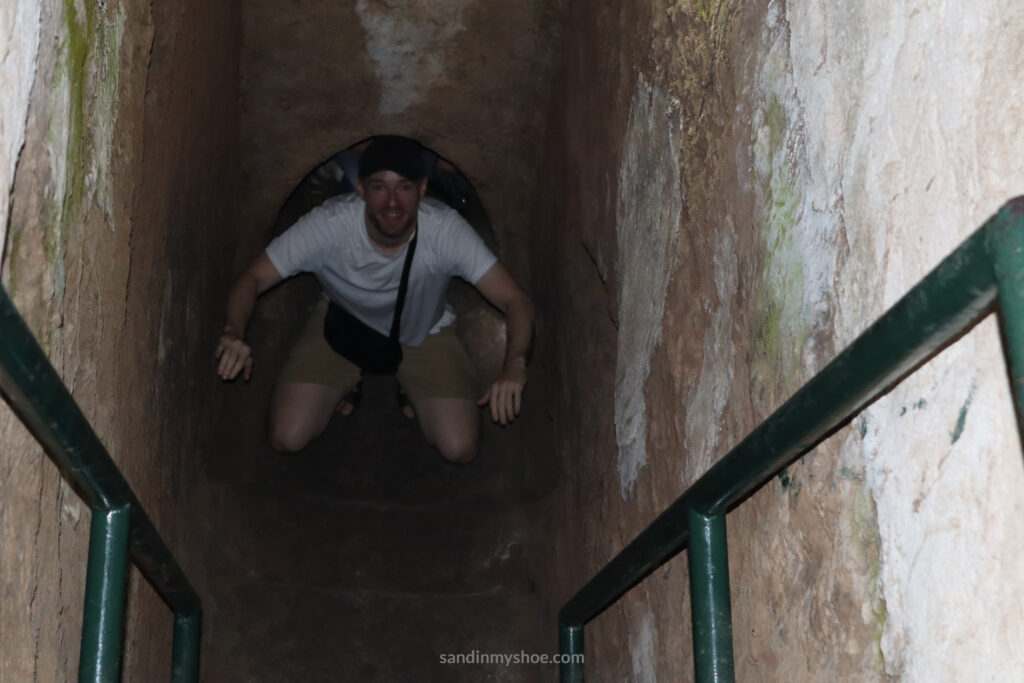
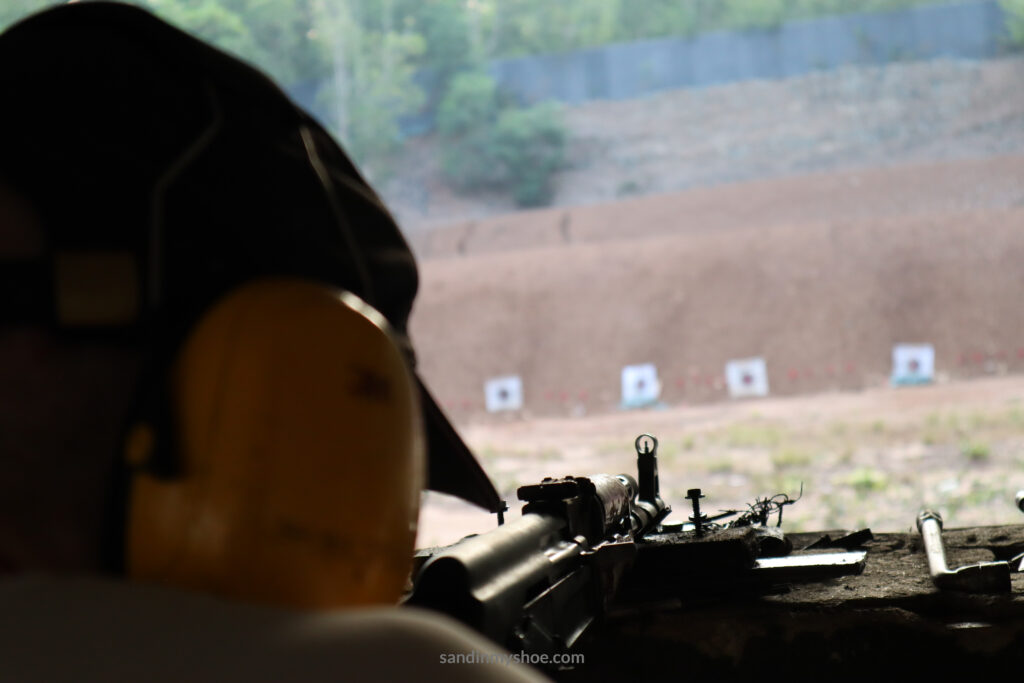
Near Ho Chi Minh City, you can access two different Củ Chi Tunnels. The closest one is Ben Dinh, which is more commercialized and designed for tourists. The tunnels have been widened to make it easier for visitors to explore without the risk of getting stuck underground, which could feel quite claustrophobic.
While exploring the tunnels, you will frequently hear gunshots from a nearby gun range. After visiting the tunnels, you can go there to try shooting for yourself if you’re interested.
If you want a truly authentic experience with the tunnels’ original structure, I recommend visiting the Ben Duoc Tunnels. This site is much less crowded and has not been modified in any way. The tunnels are extremely narrow, so if you’re not the size of a Vietnamese soldier from the war, I recommend not going too far inside.
You can do these trips with organised your or just take the local bus and explore yourself. The benefit of the tour is that you will get everyhing explained to you and you are free to ask questions.
Getting There by Local Bus
Catch Bus #13 from 23/9 Park Bus Station, District 1, near Phạm Ngũ Lão Street. I departs approximately every 30 minutes and takes about 1.5 hours. The price is around 7000 VND. Supercheap!
If you want to go to the Ben Duoc tunnel site, first take Bus #13 from District 1 (Bến Thành Bus Station) to Củ Chi Bus Station. Then, transfer to Bus #79, which will take you directly to Ben Duoc. The total journey takes around 2–2.5 hours, and the fare is about 6,000–15,000 VND in total.
1 week north Vietnam itinerary
Upon landing in Hanoi, you can immediately transfer to one of the surrounding adventure hotspots—Sapa, Ha Giang, or Cat Ba Island—to start your exploration right away. Depending on your chosen destination, you might need to spend the night in Hanoi and leave the next morning to make the most of your trip.
In my honest opinion, Hanoi is worth a day or at most two if you’re looking to explore at a relaxed pace. The city’s charm is undeniable, but if you want to fully immerse yourself in the nature, culture, and adventure that northern Vietnam has to offer, here’s an itinerary that will maximize your experience.
Days 1–3: Sapa, Ha Giang or Cát Bà
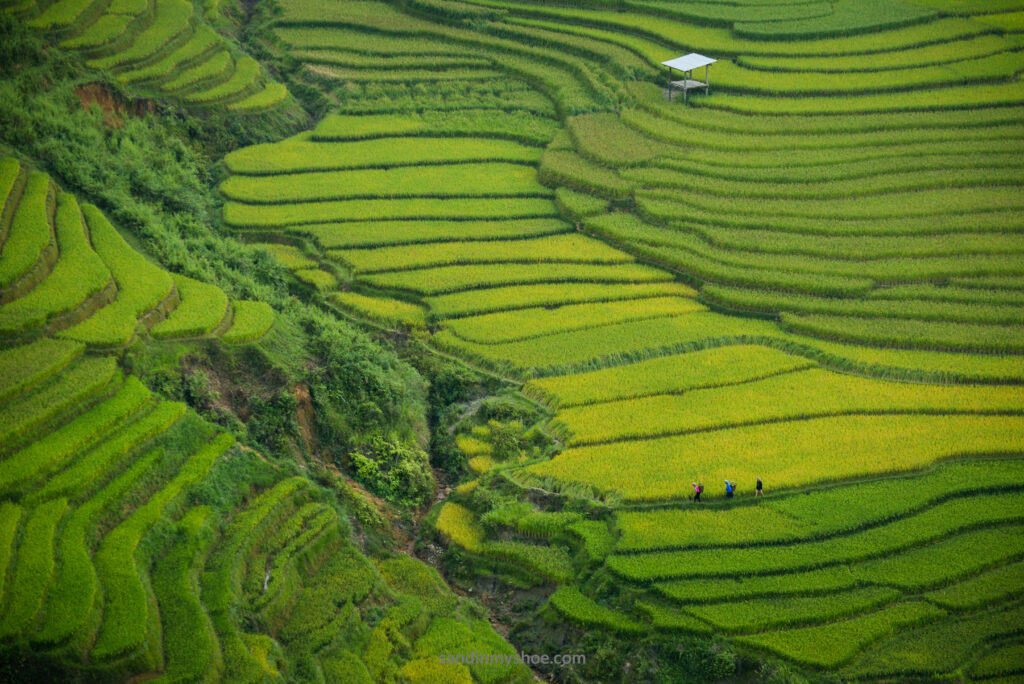
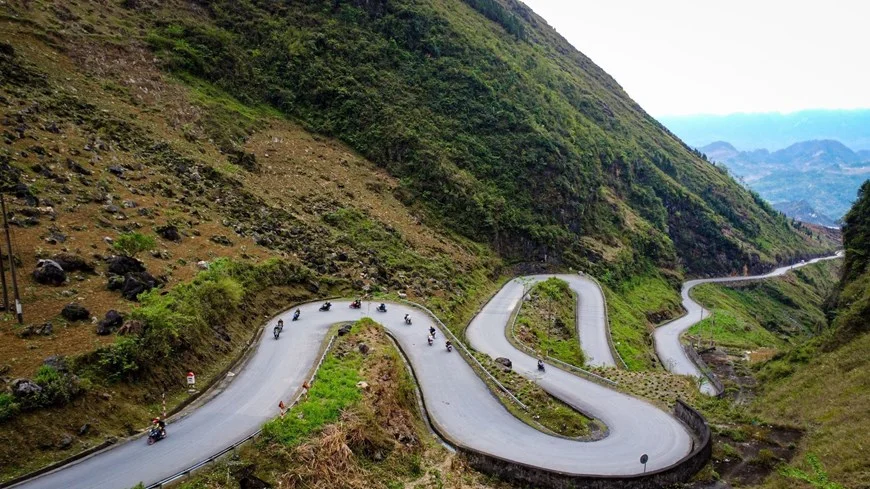
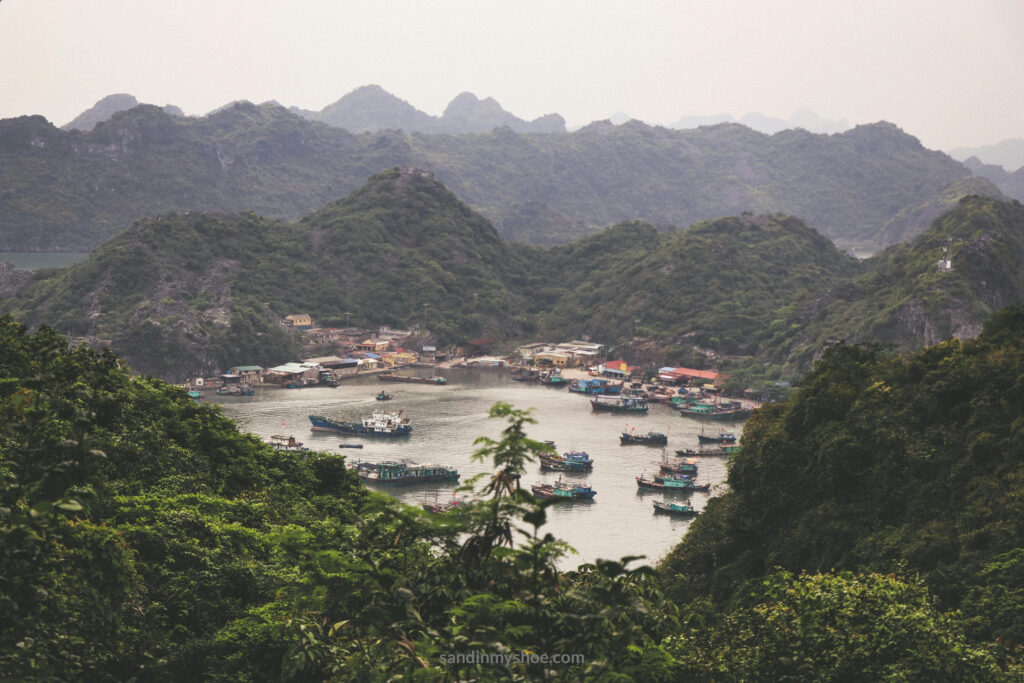
Option 1: Sapa for 3 days of trekking adventure
The perfect place if you’re looking for adventure, stunning landscapes, and rich cultural experiences. Spend 3 days exploring this beautiful region in northern Vietnam. You can dedicate two days to trekking through the lush rice terraces and visiting the local ethnic villages, where you’ll get to interact with the friendly mountain tribes like the Hmong and Tay people. The highlight of Sapa is the mesmerizing views of the terraced fields, towering mountains, and the valley below. On your third day, take it easy and enjoy the cool weather while soaking in the peaceful surroundings. This rest day could be spent strolling around the town, visiting local markets, or even riding the cable car to the top of Fansipan, the highest peak in Vietnam. I would recommend going with a tour to really max out everything without needing to spend to much time organizing everyhing.
Option 2: Motorbike Journey of Ha Giang Loop for 3 Days
The Ha Giang Loop is a must for thrill-seekers and motorbike enthusiasts. Over the course of 3 days, you’ll ride through some of Vietnam’s most stunning landscapes. The route takes you along winding mountain roads, with towering cliffs, deep valleys, and traditional ethnic villages. Each stop offers breathtaking views, such as the stunning Ma Pi Leng Pass, where you can take in the spectacular scenery. The loop is a real adventure, with rugged roads, beautiful hidden spots, and opportunities to experience the culture of the region’s ethnic minorities. After a long day of riding, you’ll rest in small local guesthouses, immersing yourself in the remote and authentic lifestyle of northern Vietnam. If you don’t have the skills of driving or don’t have an international license, no worries! You can always sit behind a driver and enjoy the views without the stress. Just keep in mind, the roads are treacherous, so it’s better to leave the driving to someone who knows the terrain!
Option 3: Cát Bà for 3 days of beach relaxation
Cát Bà for 3 days of relaxation – If you prefer relaxation on less touched sandy beaches and a more slow-paced way of exploring, I’d recommend Cát Bà. The island offers a similar natural landscape to Ha Long Bay but with fewer crowds. It is part of the stunning Cát Bà Archipelago, known for its dramatic limestone karsts and tranquil beaches. Spend your days exploring hidden lagoons, kayaking through emerald waters, or simply enjoying the island’s peaceful atmosphere. Cát Bà is perfect for a quiet retreat. In order to get there, you need first go to Hai Pong and from there take a ferry.
Days 4–5: Ha Noi
I’d recommend staying the rest of your nights in Ha Noi and doing day trips from here to Ha Long Bay and Ninh Binh. Ha Noi is great for a couple of days, with its blend of rich history, bustling streets, and quirky moments. What I enjoy most about the city are the random aerobics group sessions in unexpected places, outdoor hair salons, the countless coffee shops on every corner, and, of course, the seemingly endless number of small dogs. I would recommend to check out the spots below during your stay.
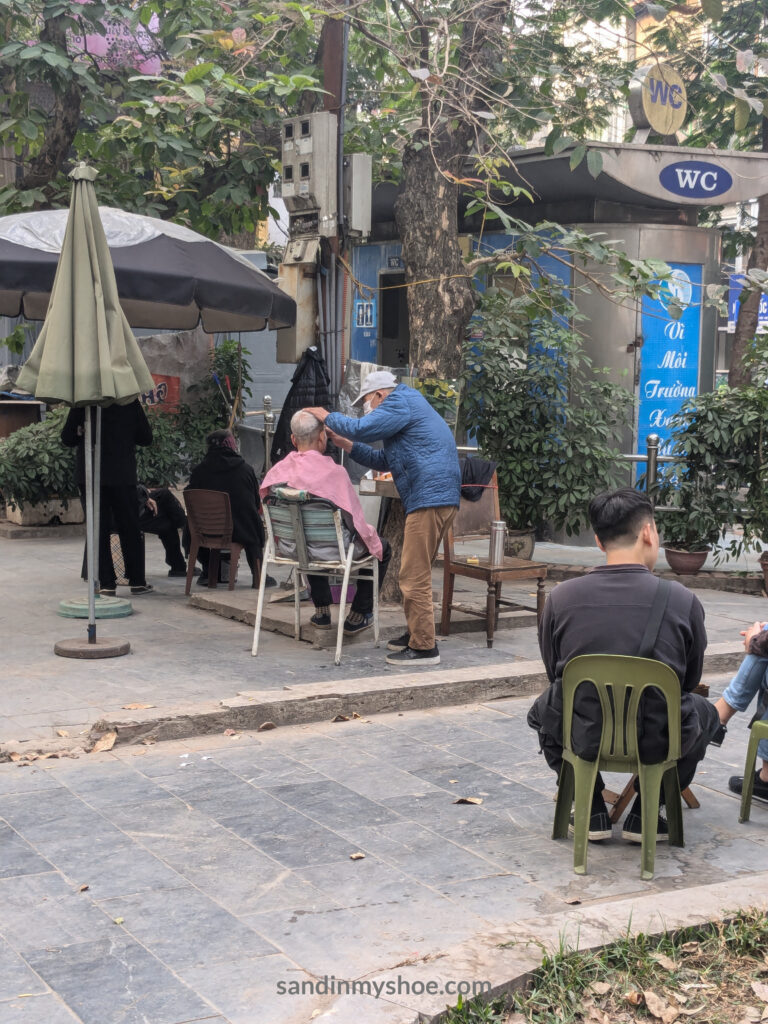
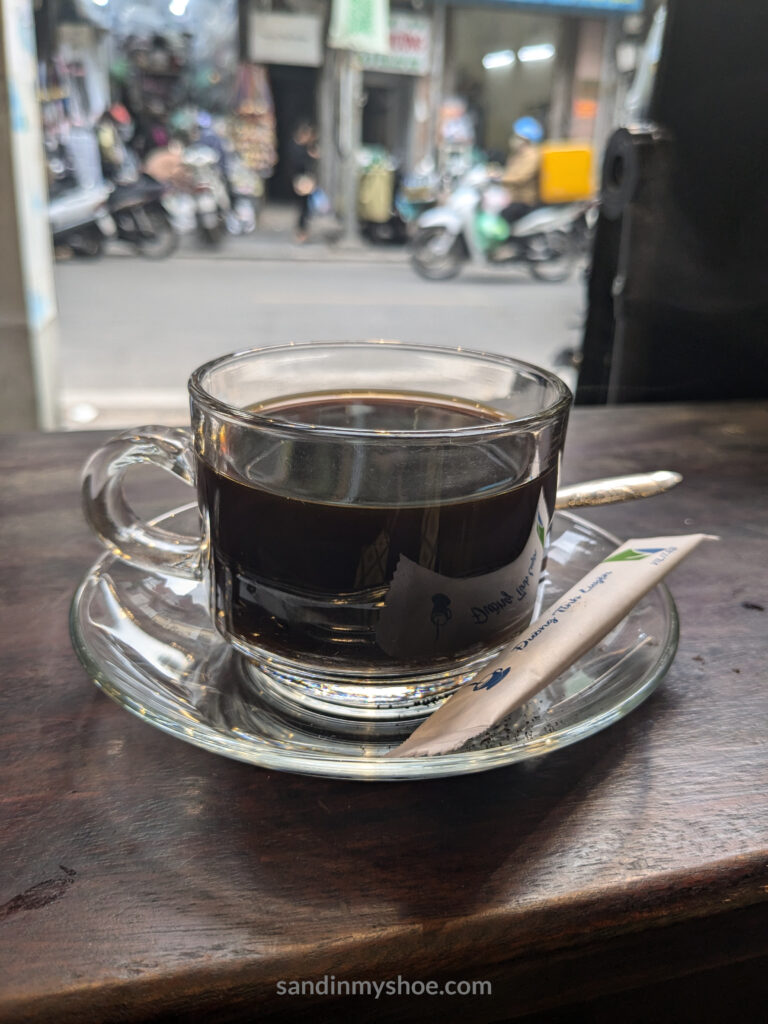
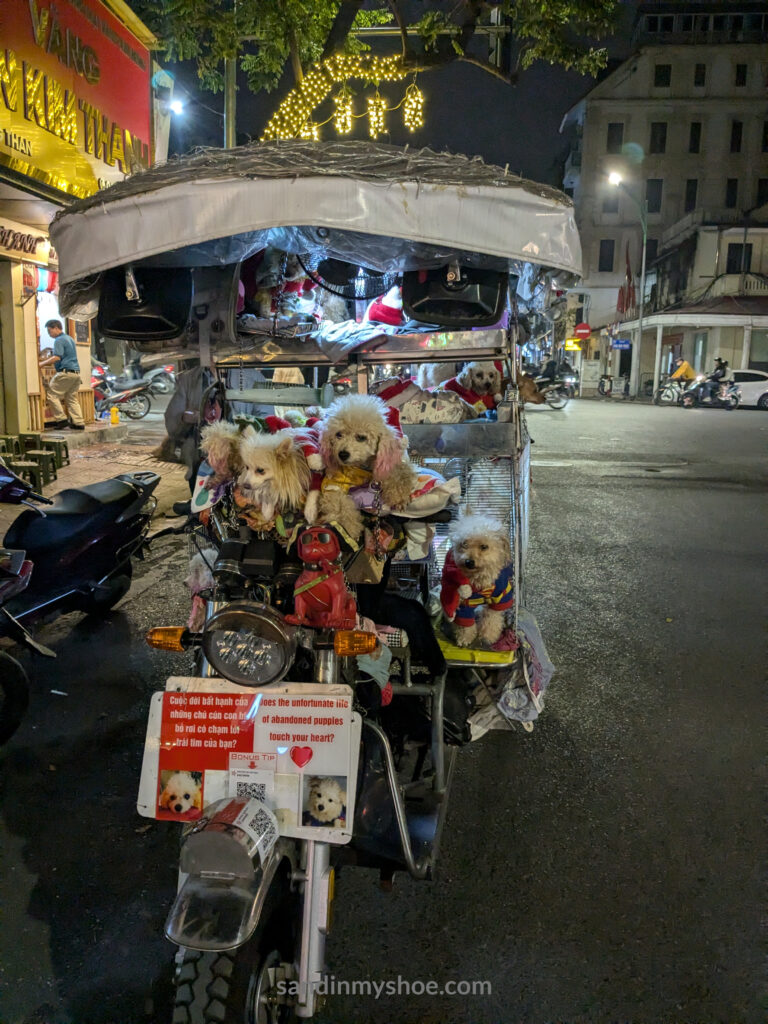
Train street cafe
Enjoy a cup of coffee while watching the train pass by with only a few centimeters to spare. Quite touristic, but what tourist site isn’t, well worth the visit in my opinion.
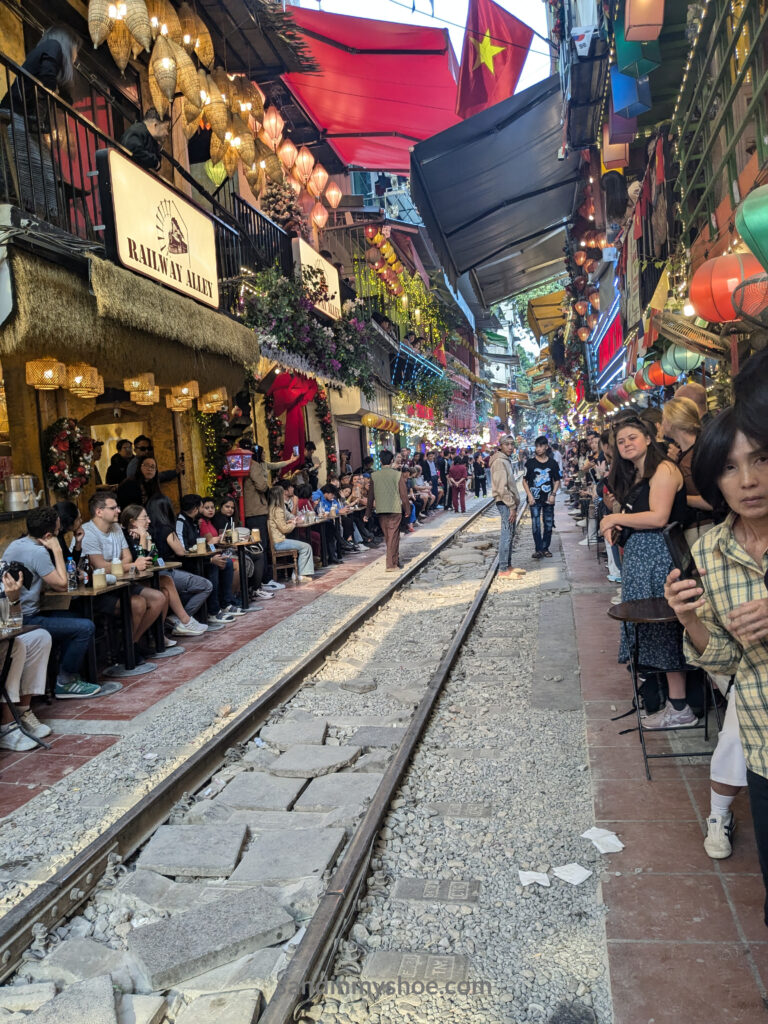
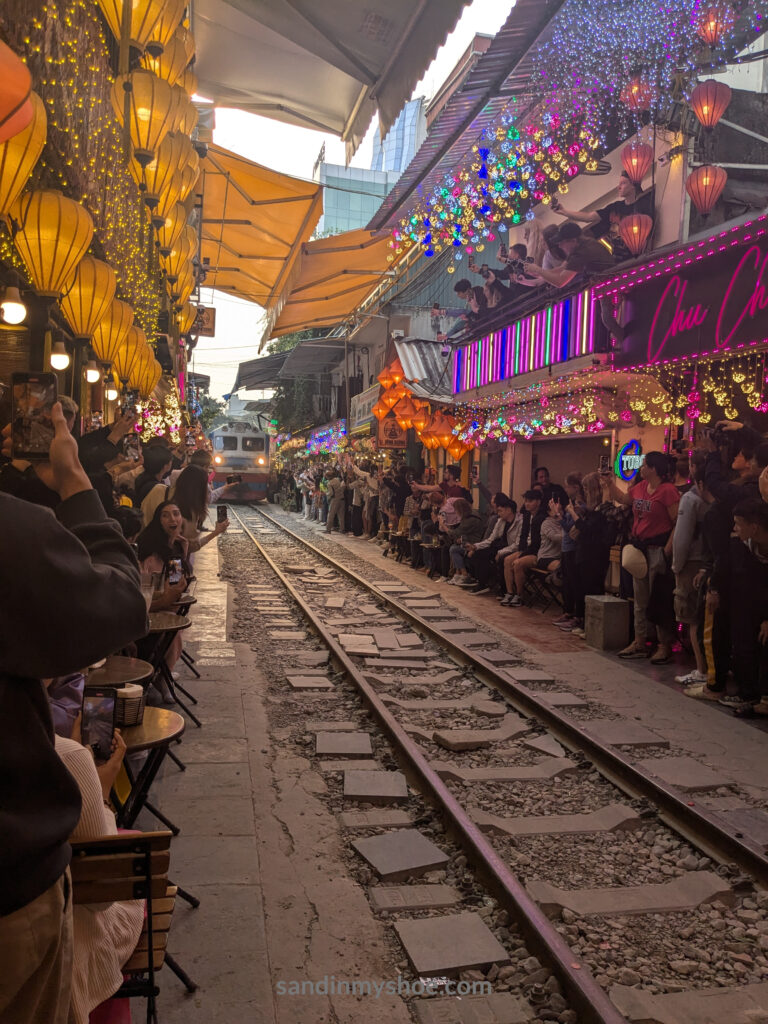

Temple of Literature
Get yourself educated at the Temple of Literature—or just rub the chest of the giant peacock like I did and hope for the best!
On a more serious note, this historical site is well worth a visit. The complex features several beautiful garden sections and numerous temples, offering a peaceful retreat from the city’s hustle and bustle.
Locals often come here to take pictures in traditional Vietnamese clothing—whether for Tinder profiles, graduation celebrations, or weddings.
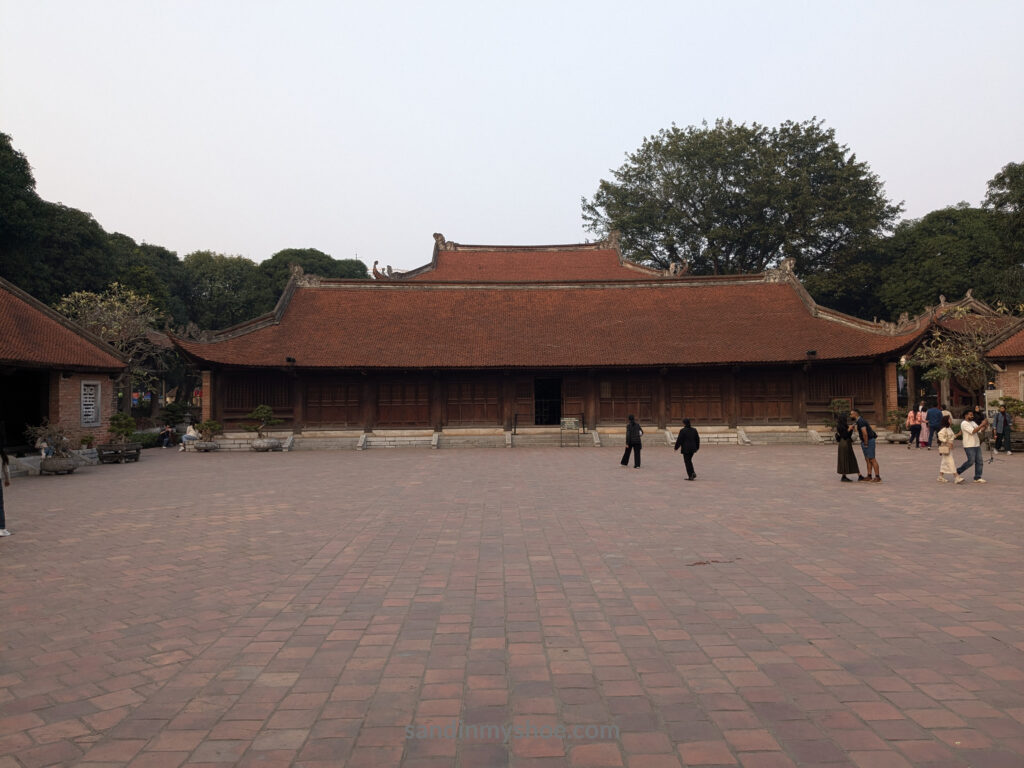
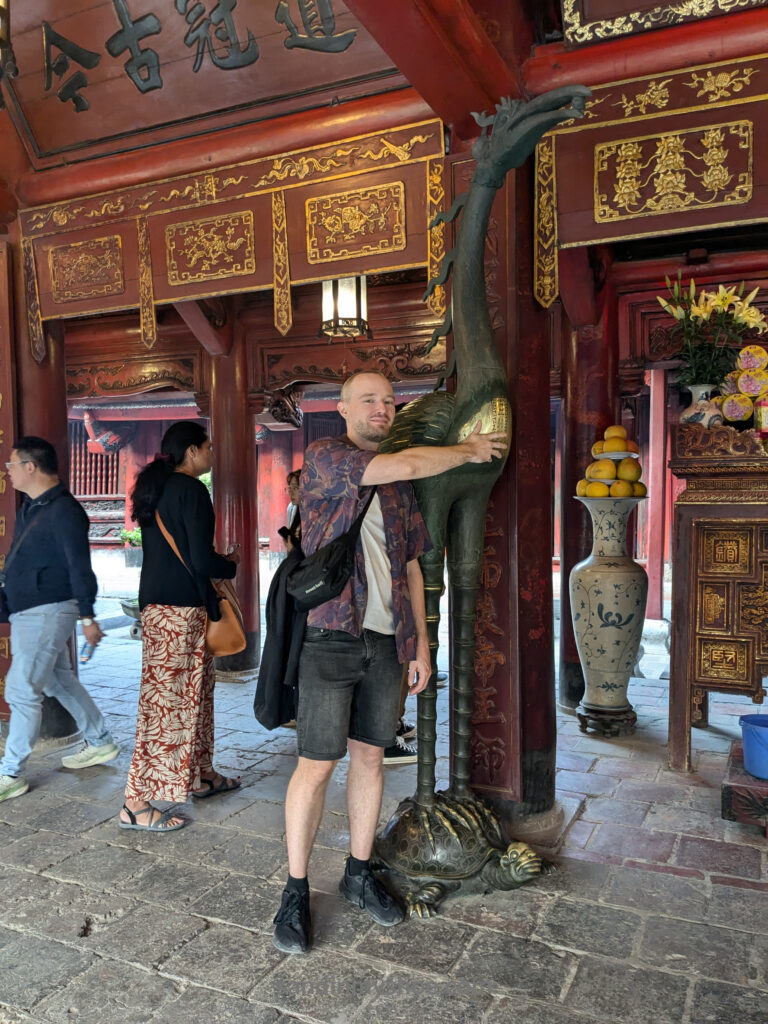
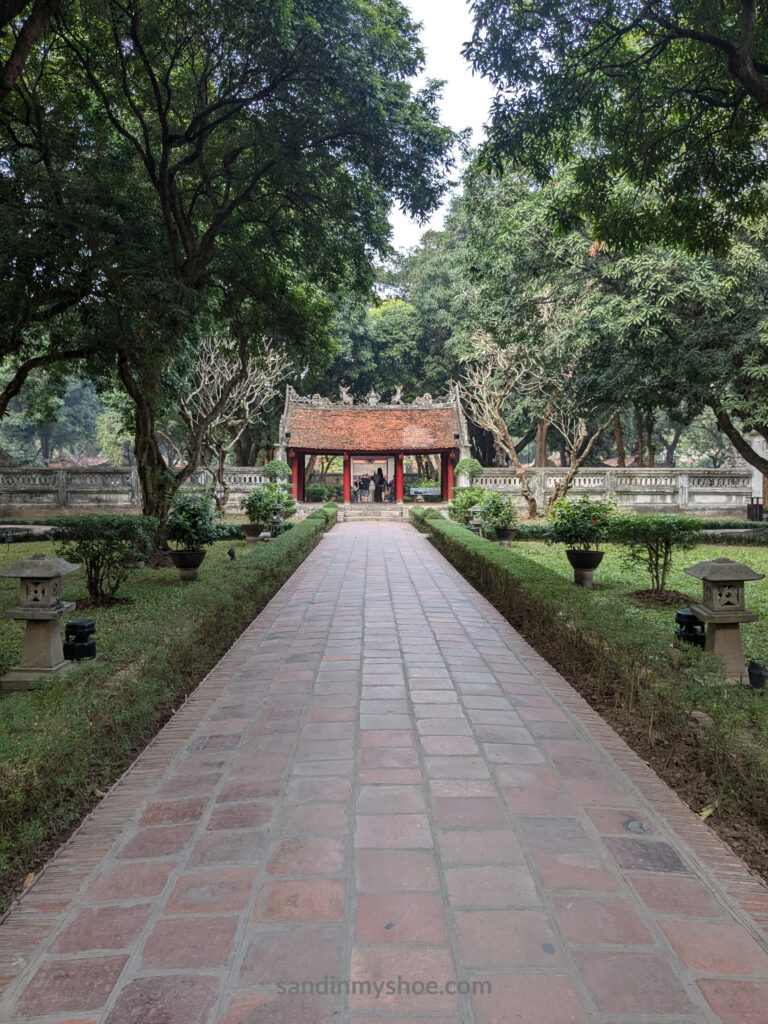
Hilton Prison (Hỏa Lò Prison)
Hỏa Lò Prison, famously nicknamed the “Hanoi Hilton” by American POWs during the Vietnam War, is a chilling yet fascinating historical site in the heart of Hanoi. Originally built by the French in the late 19th century to imprison Vietnamese revolutionaries, the prison later became infamous for holding American pilots, including John McCain.
Today, the site serves as a museum, showcasing the grim conditions prisoners endured, from overcrowded cells to shackles and guillotines used during the colonial era. Despite its dark history, the museum offers a compelling look into Vietnam’s past struggles and resilience.
A visit here is both haunting and eye-opening, making it a must-see for history enthusiasts exploring Hanoi.
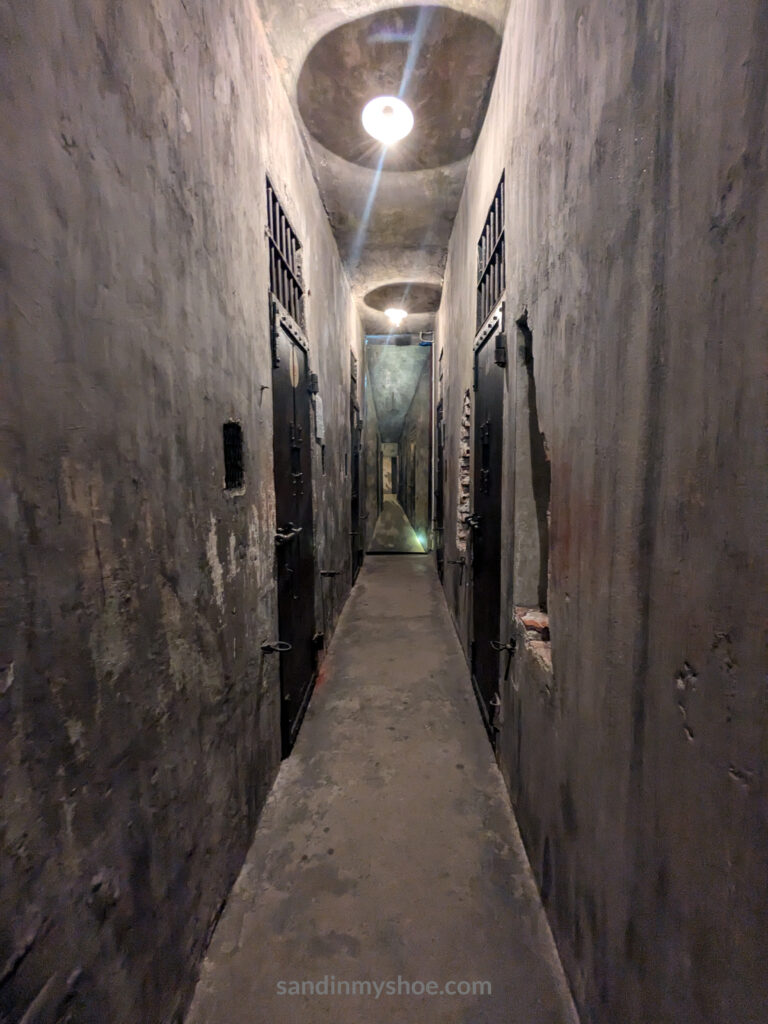
Tran Quoc Pagoda & West Lake (Ho Tay)
Tran Quoc is the oldest pagoda in Hanoi which was built in 541 in the Early Ly Dynasty. It’s a sacred sanctuary of Buddhism attracting not only Buddhist believers but countless of cultural explorers. It’s located in a small island in the west lake, which also makes a great walking or jogging route for the more active visitors.
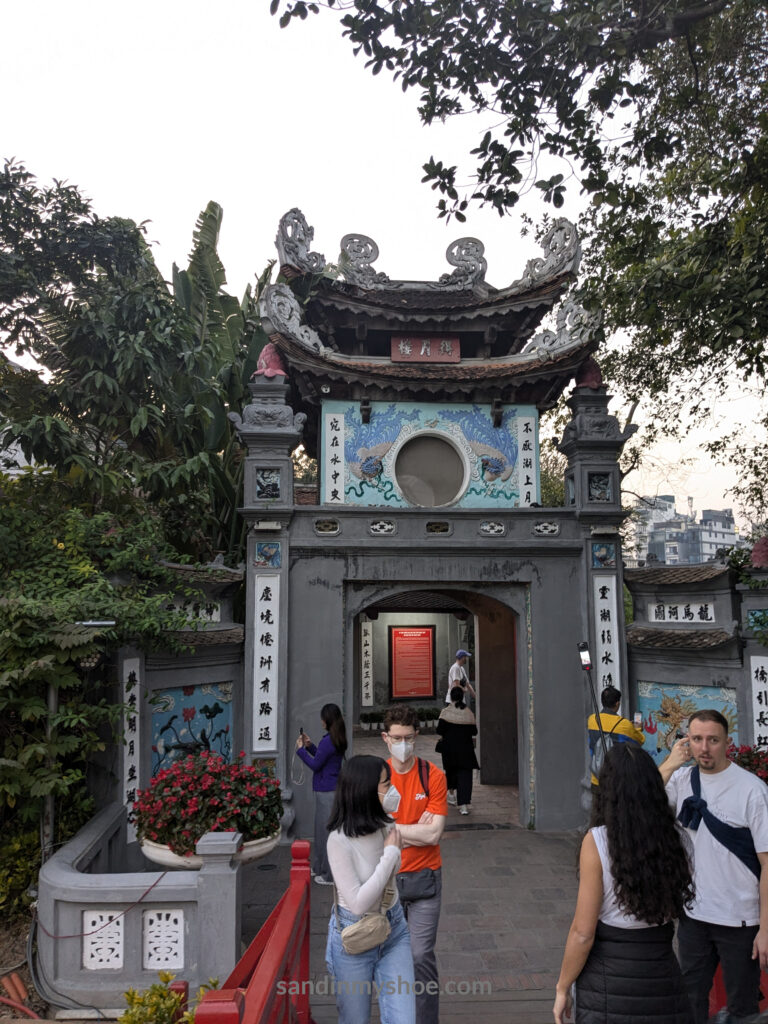
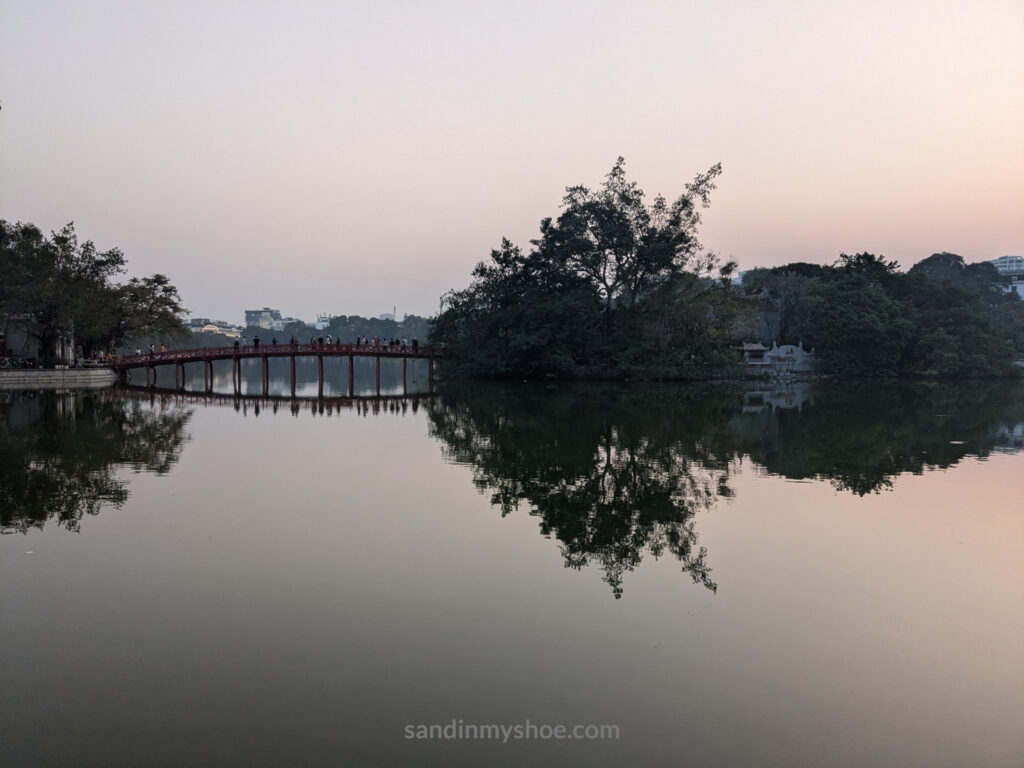
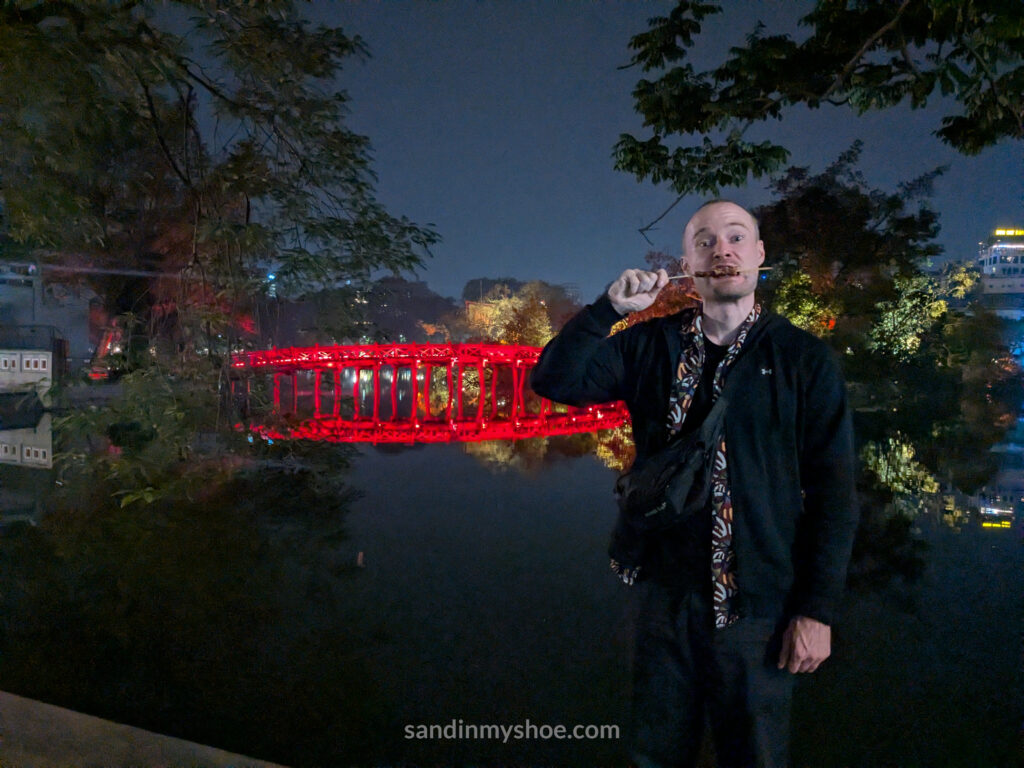
Day 6: Daytrip to Ha Long Bay
Expect Ha Long Bay to be a major tourist destination, but its breathtaking scenery makes it well worth a visit. The emerald waters dotted with towering limestone islands create a stunning landscape unlike any other. Personally I got I little bit unlucky with the weather, but the mist made it even more mysterious. Taking a cruise is the only way to experience it, allowing you to soak in the views while stopping at various islands along the way. These stops offer opportunities to explore caves, hike to panoramic viewpoints, do a bit of canoying, and capture great selfies to boost your social media ratings—because if you didn’t post it, did it even happen? However, if you’ve already visited Cát Bà, you may find Ha Long Bay less essential, as the landscapes share many similarities.
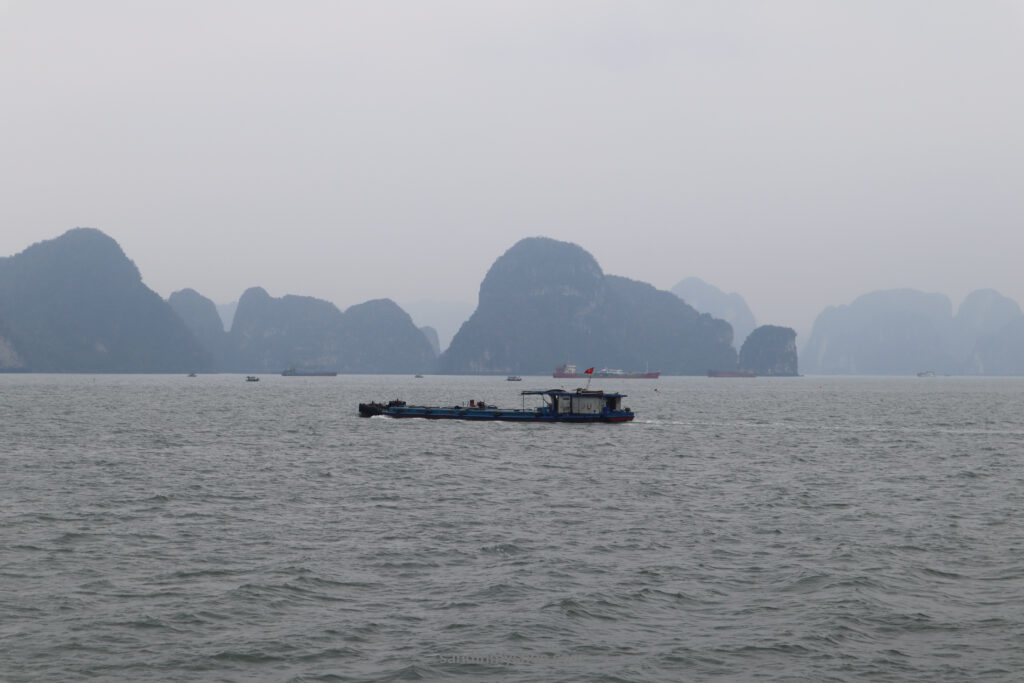
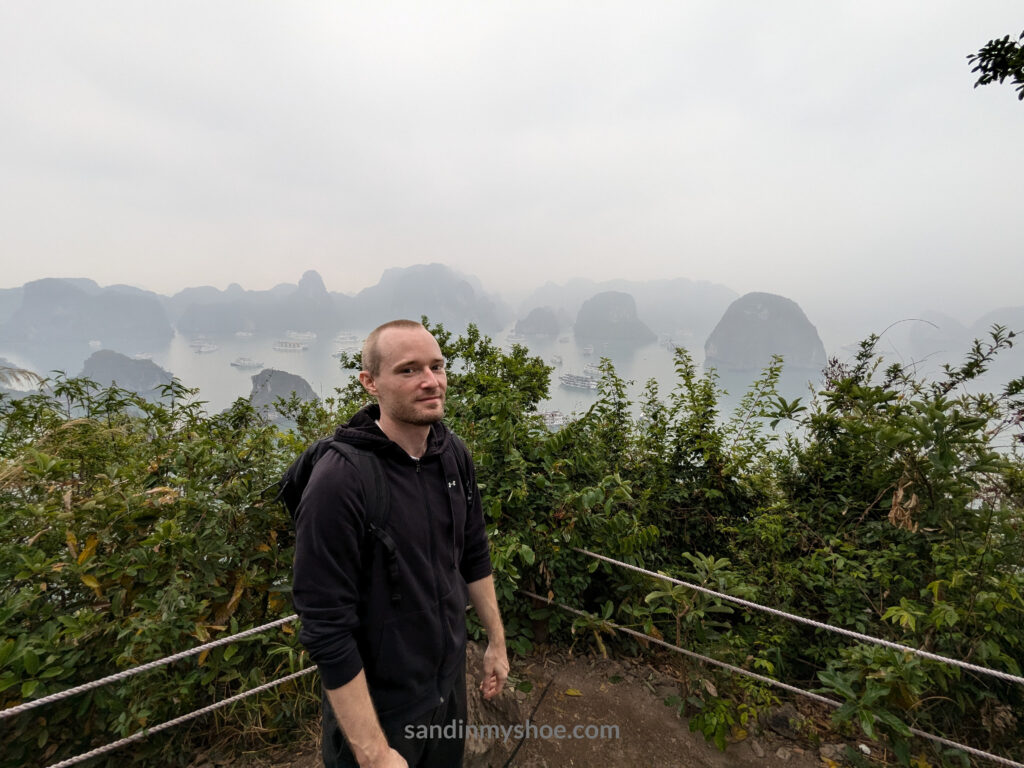
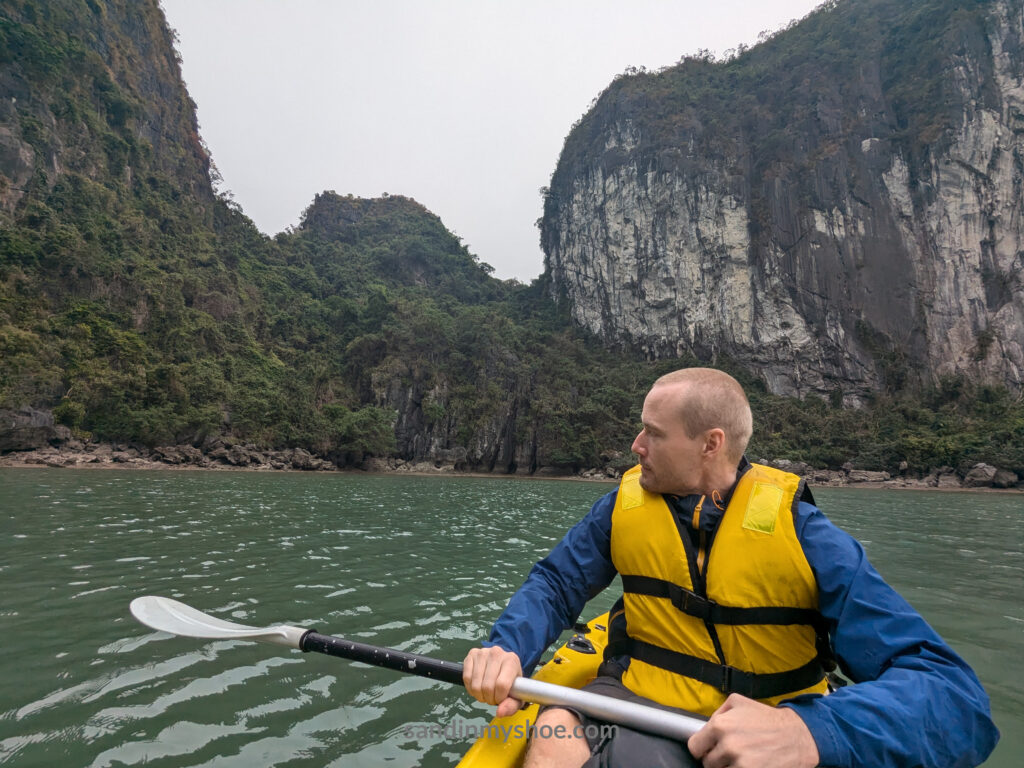
Day 7: Daytrip to Ninh Binh
What a charming village! It’s like experiencing Ha Long Bay’s breathtaking landscape, but on land. With its beautiful rice paddies and tranquil rural atmosphere, it’s the perfect place to slow down and take in the scenery. Rent a bicycle or motorbike to explore the village at your own pace. Personally, I prefer Ninh Binh over Ha Long Bay—it feels more authentic and less crowded, but still busy in the major spots.
Fun fact: parts of the new King Kong movie were filmed here, making it a must-visit for movie buffs and nature lovers alike.
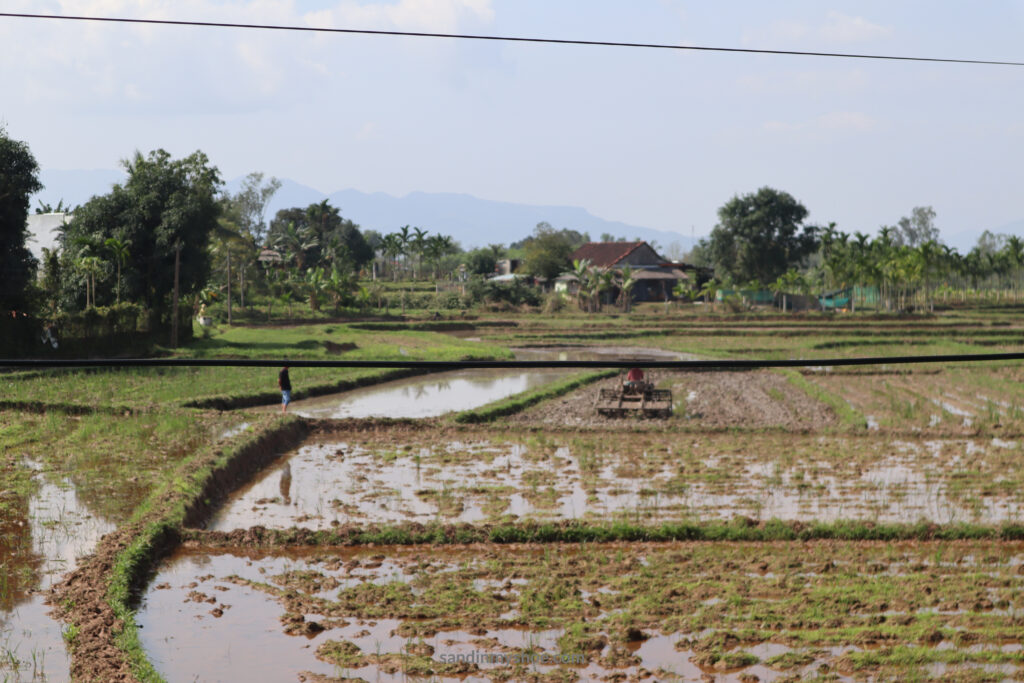
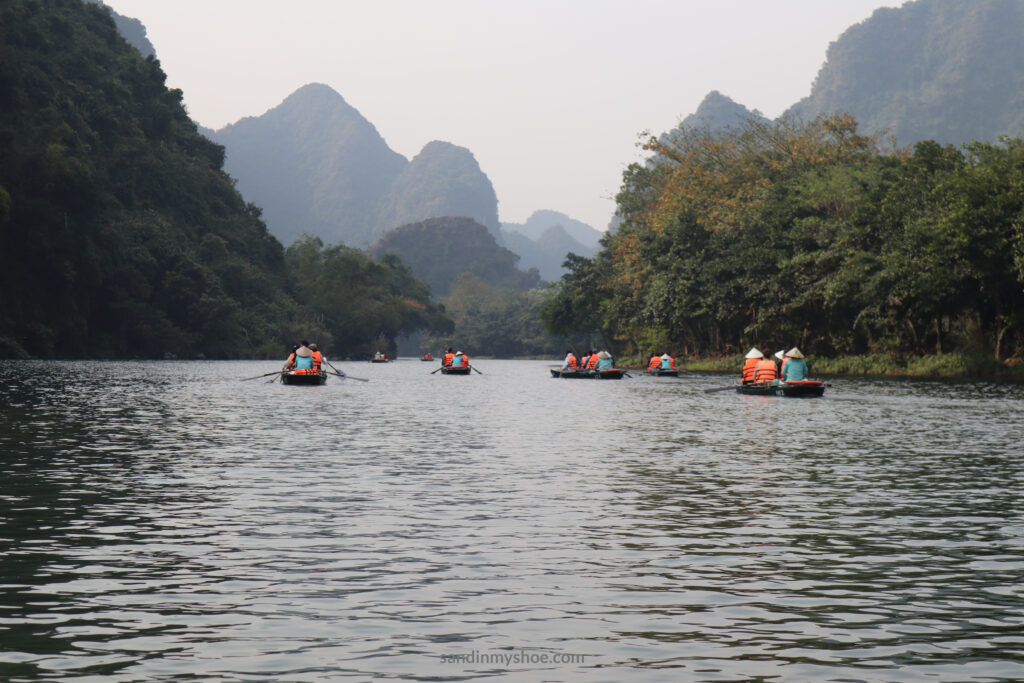
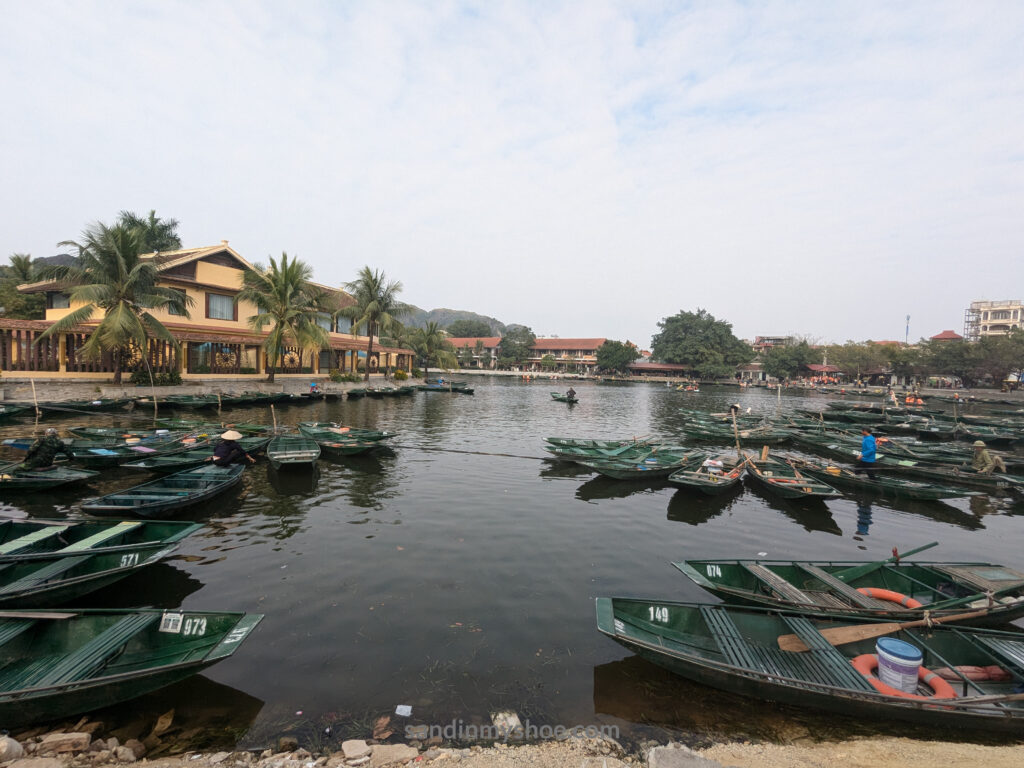
Food & Drinks
Vietnamese cuisine is a perfect balance of flavors, textures, and surprises. Beyond the well-known pho and banh mi, there are plenty of exciting dishes to try, from comforting street food to more adventurous specialties.
The best way to find a great restaurant is to follow the locals! If a place is packed with Vietnamese diners, it’s a good sign that the food is authentic and reasonably priced. I also check Google reviews for extra insight, but nothing beats seeing where the locals eat—after all, they know the best spots!
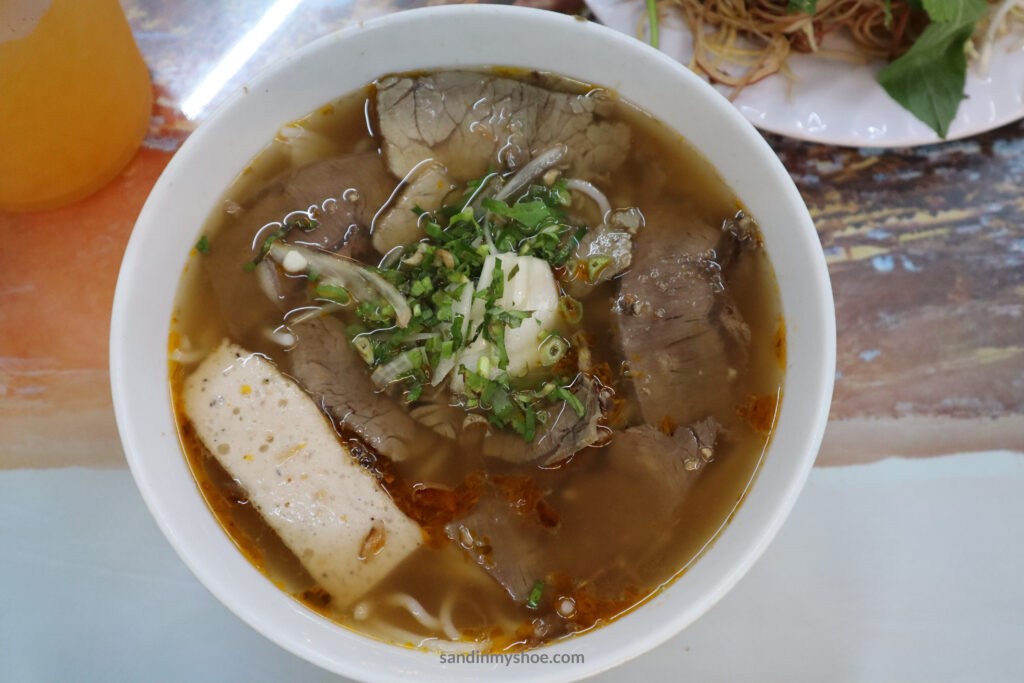
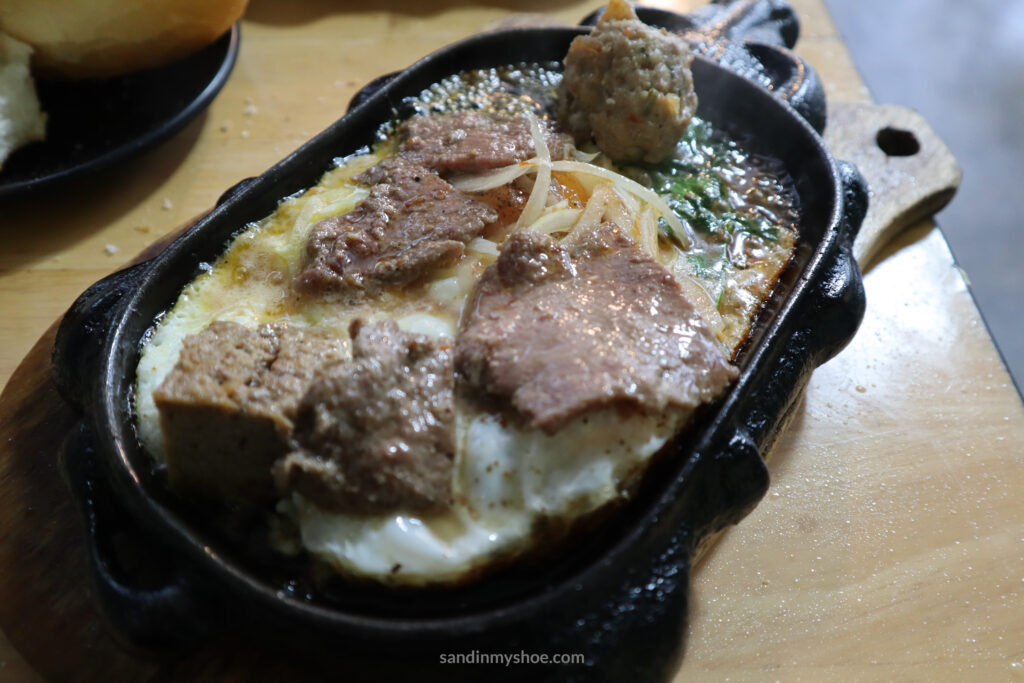
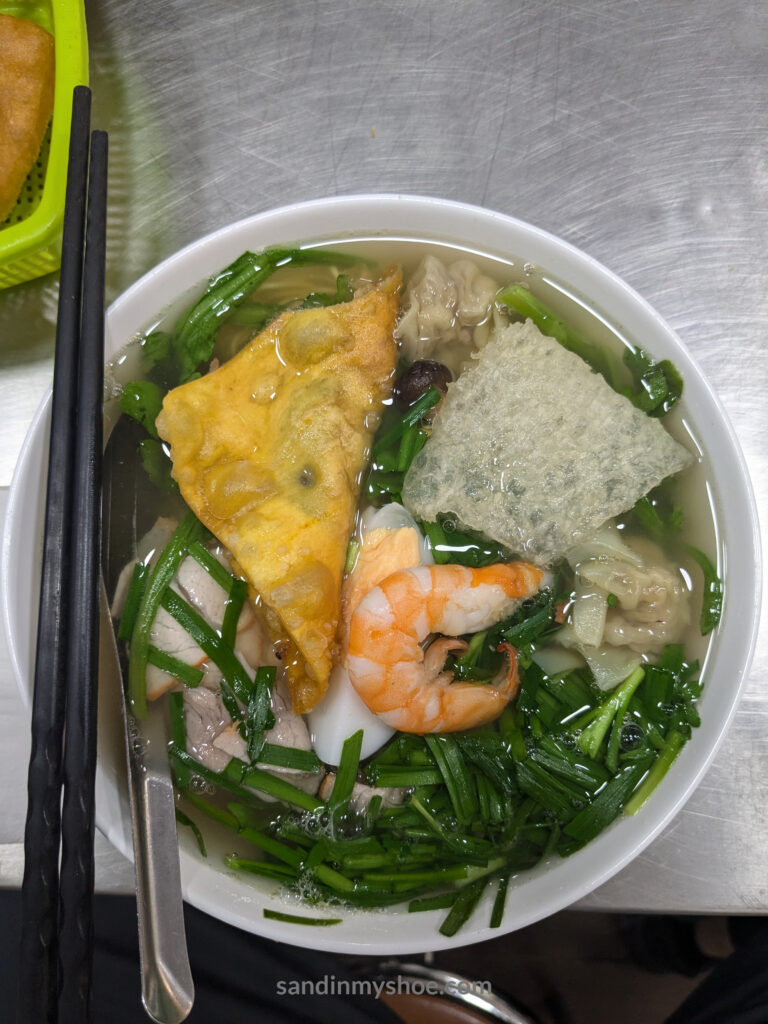
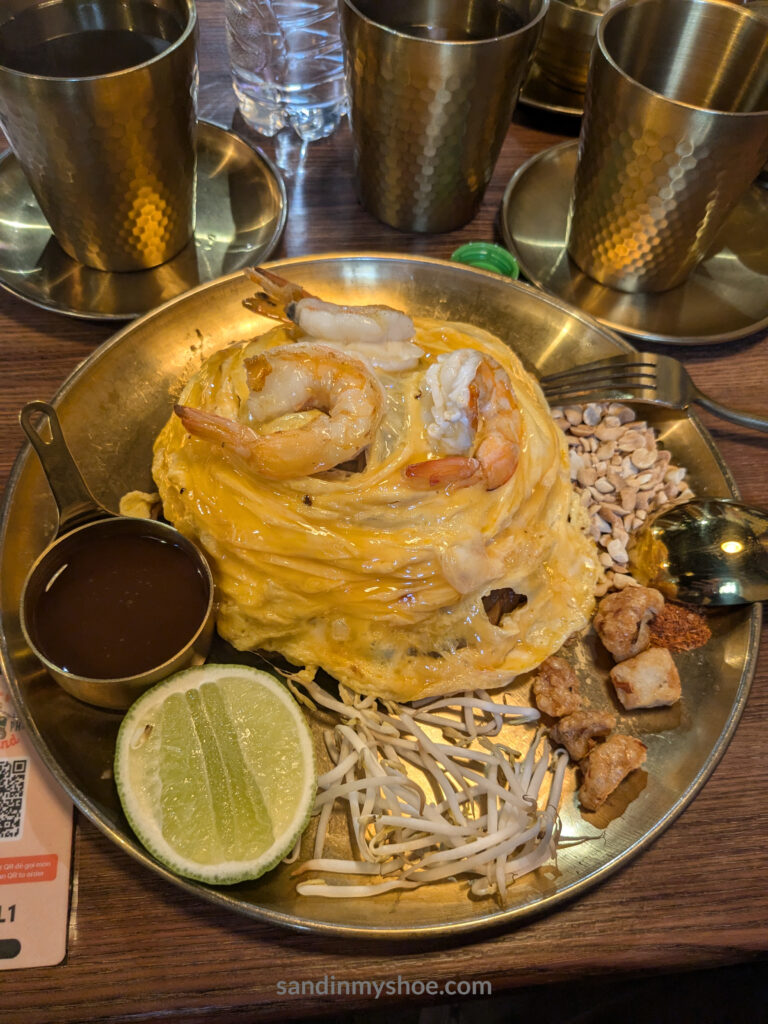
Grilled Rice Cake
These are usually eaten as a snack or breakfast item and can be served plain or with toppings like dried shrimp, mung bean paste, or fish sauce, depending on the regional variation.
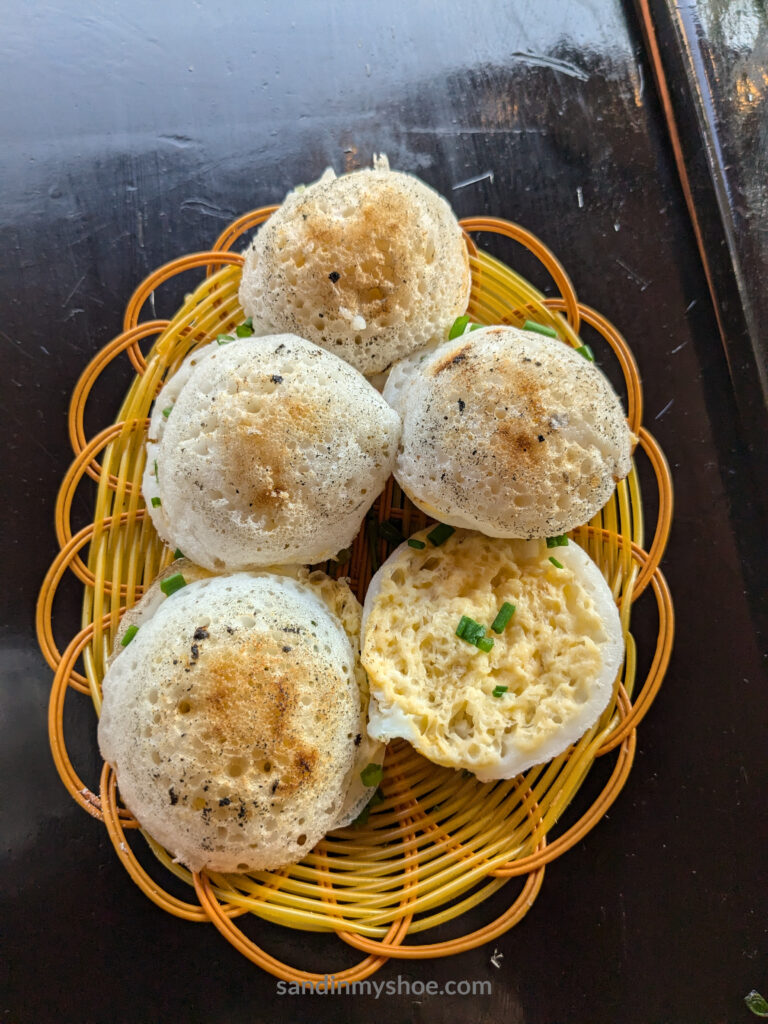
Egg Coffee
If you’re a coffee enthusiast, you absolutely must try egg coffee. It’s incredibly creamy, mildly sweet, and features a unique presentation: the egg sits on top, while the coffee rests beneath. The cup is usually placed in a bowl of warm water, which may seem unusual at first, but the combination is surprisingly delightful. While I typically enjoy my coffee black and wouldn’t have egg coffee every day, it’s a fun change when I want to mix things up.
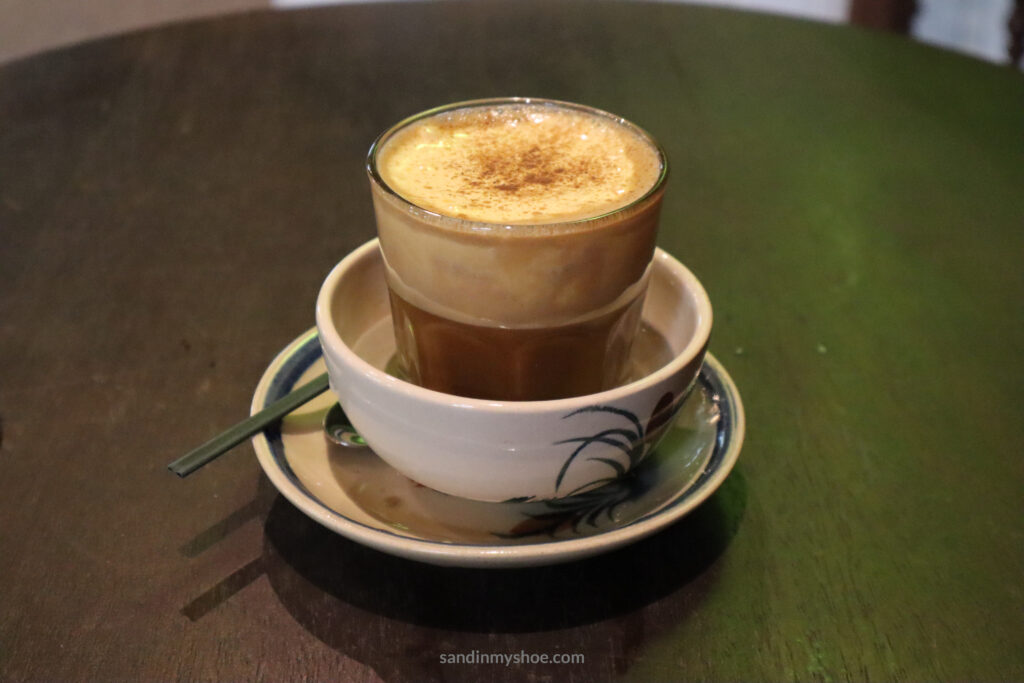
The place in Ho Chi Minh City that specializes in egg coffee is in district 1.
Pho
Phở is Vietnam’s most iconic dish, loved by locals and travelers alike. This flavorful noodle soup consists of a rich, aromatic broth, silky rice noodles, and tender slices of beef (phở bò) or chicken (phở gà), topped with fresh herbs, lime, and chili for extra flavor. The secret to a great phở lies in its broth, which is slow-cooked for hours with beef bones, star anise, cinnamon, and other spices. Every bowl is a perfect balance of savory, sweet, and umami flavors.
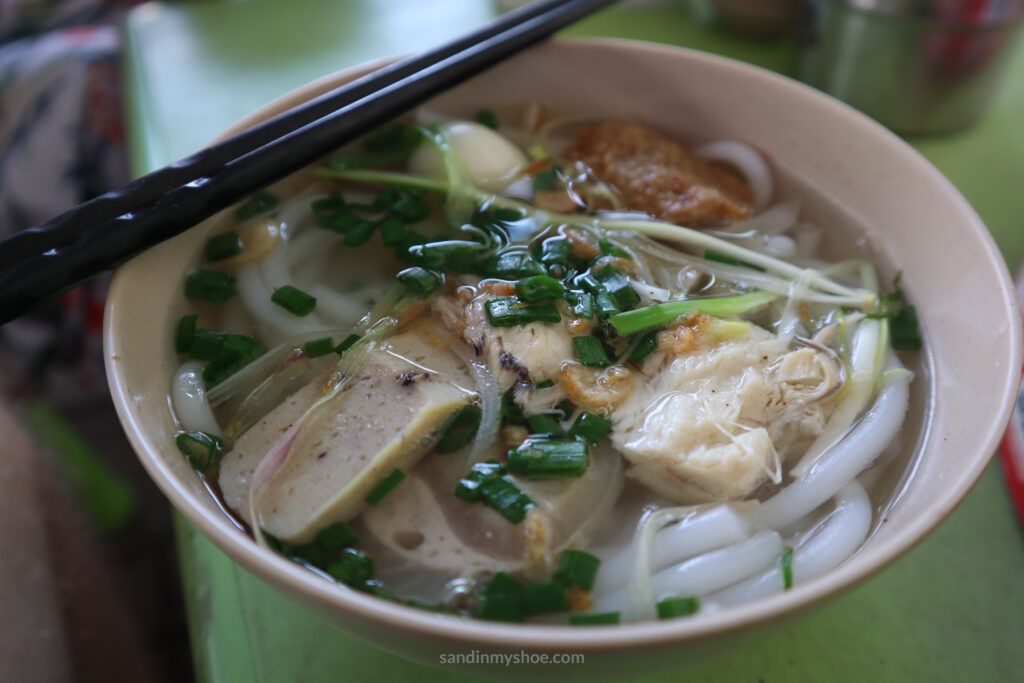
Bánh mì
This iconic Vietnamese sandwich is made with a crispy baguette filled with meats like pork, pate, or chicken, along with pickled vegetables, cilantro, and spicy chili sauce. A must-try street food!
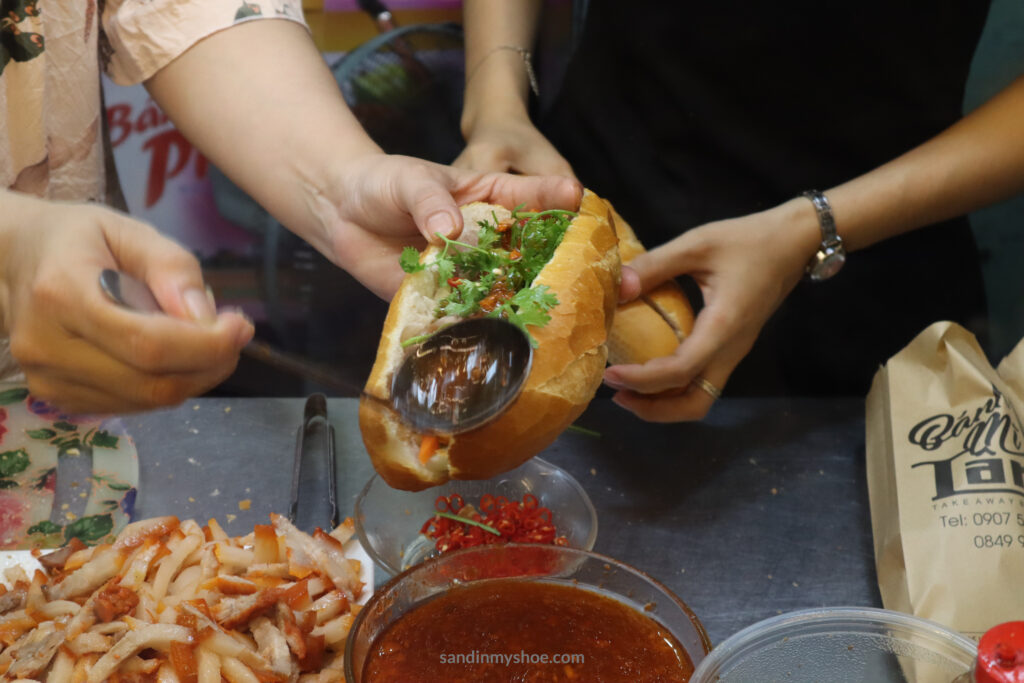


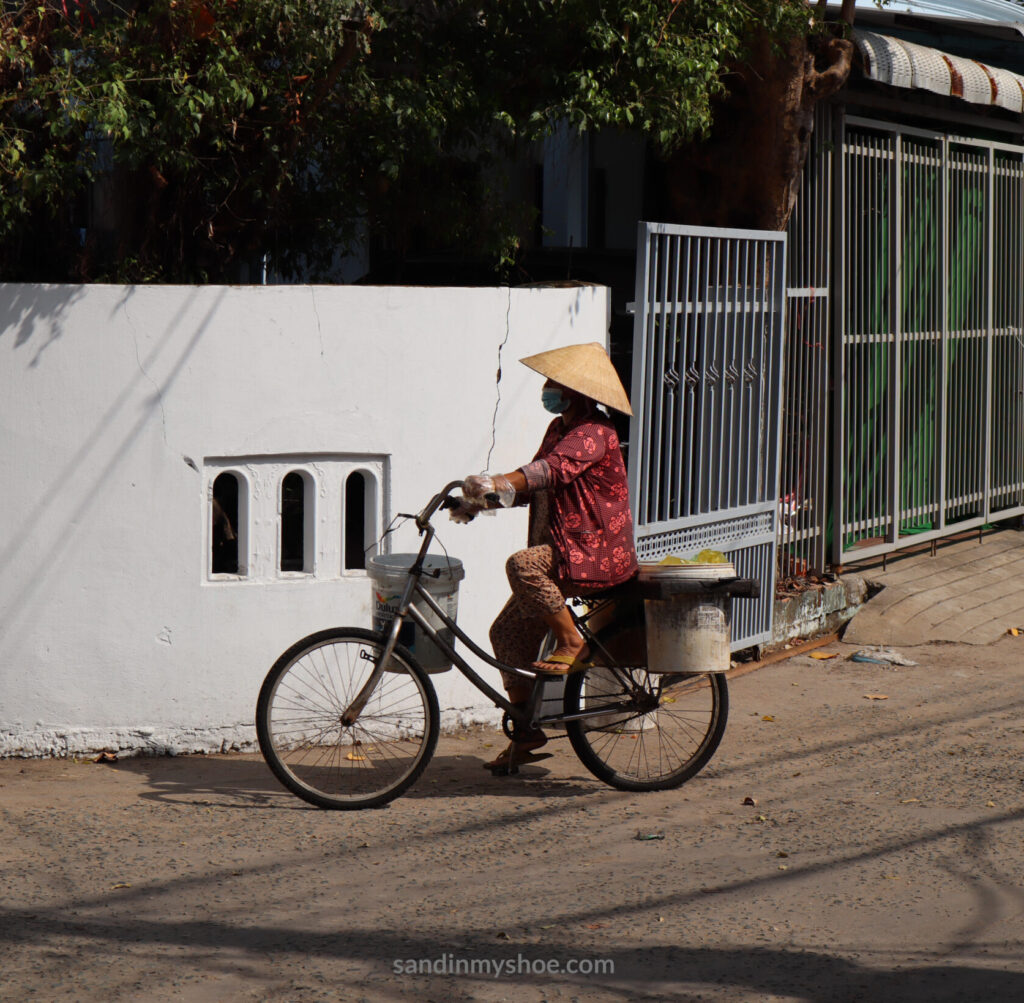



No comments yet, be the first one!
I appreciate hearing from you. If you have any suggestions, questions, or feedback, please leave a comment below. Your input helps ensure the information stays relevant and up to date for everyone.
Thank you for sharing your thoughts!